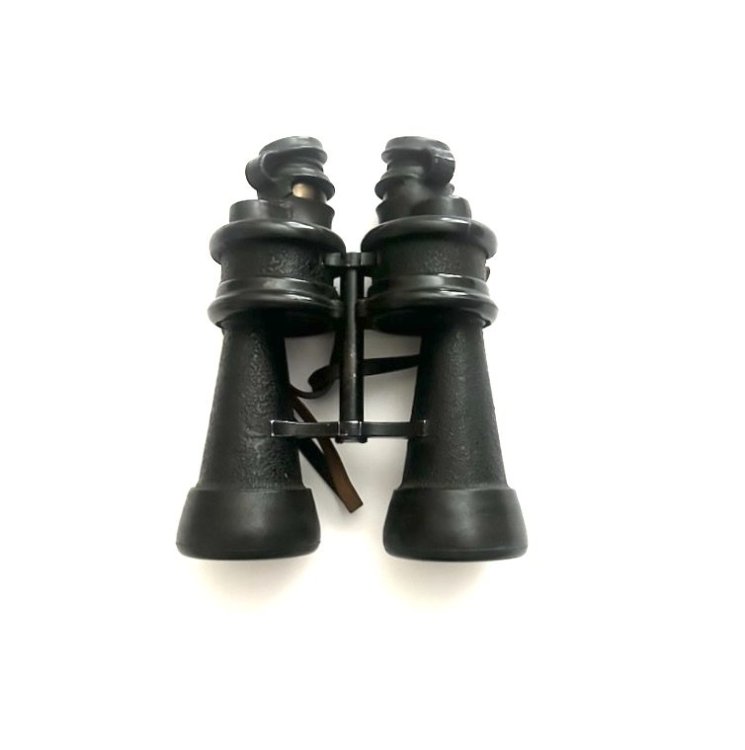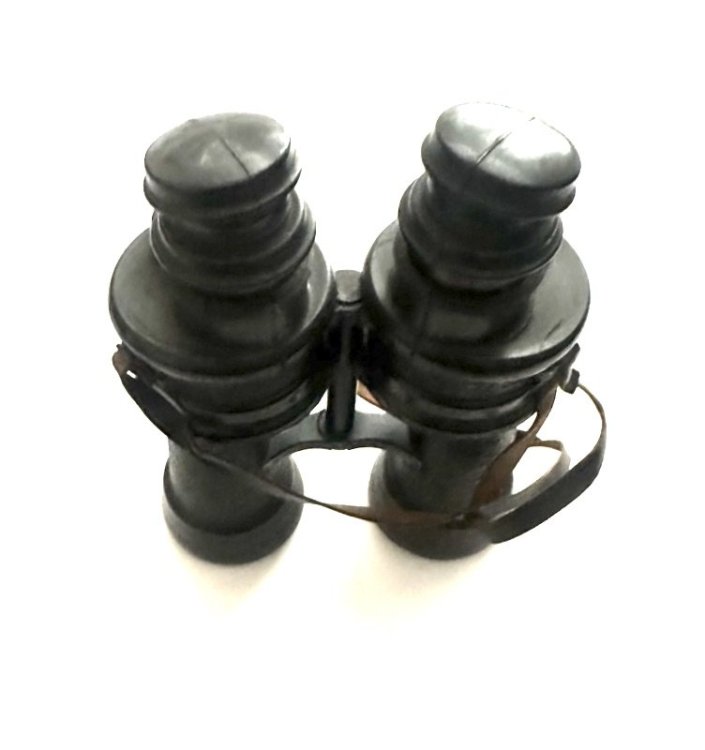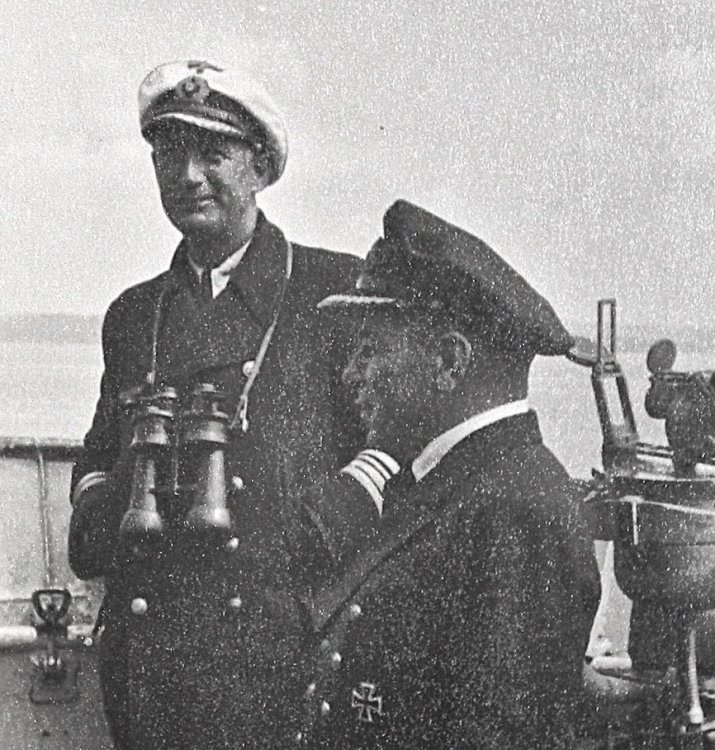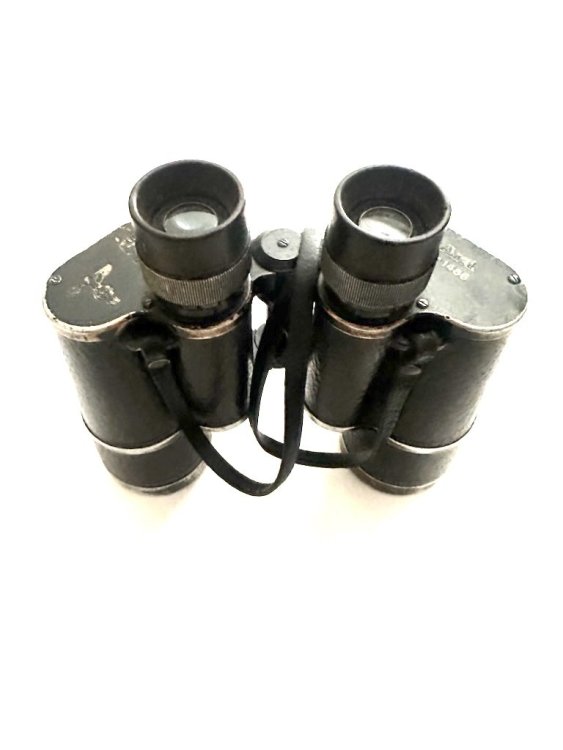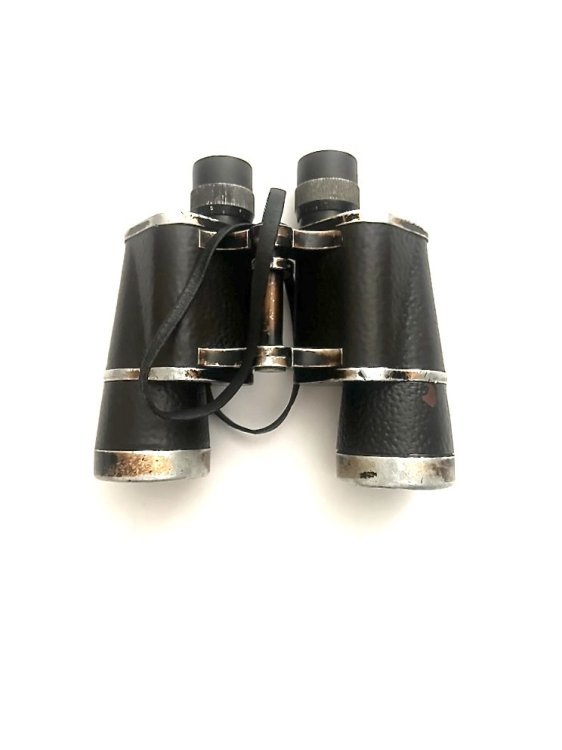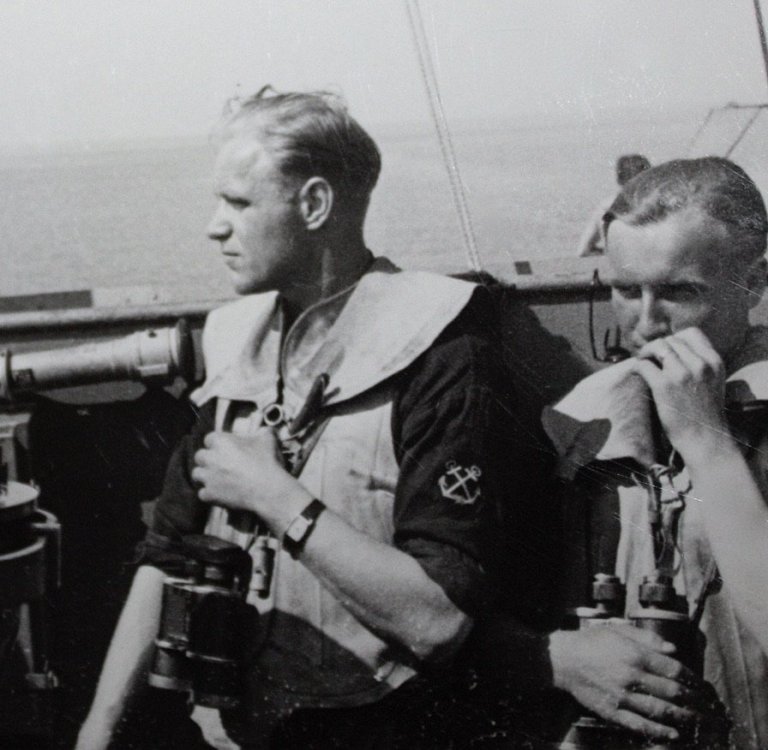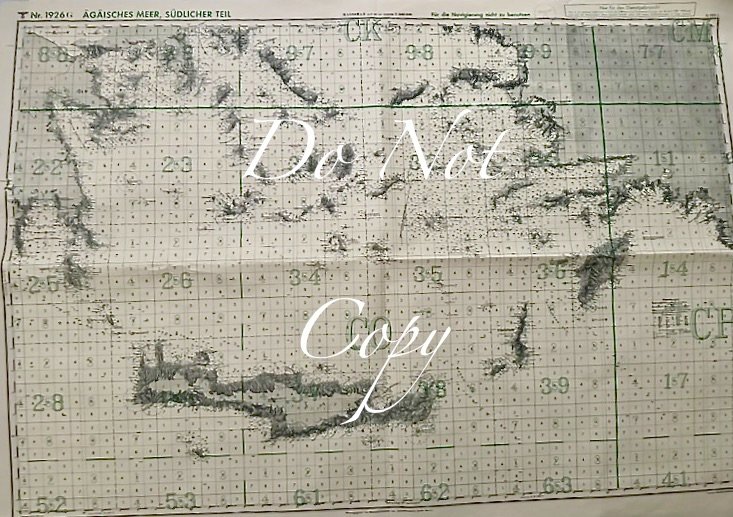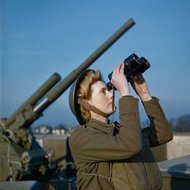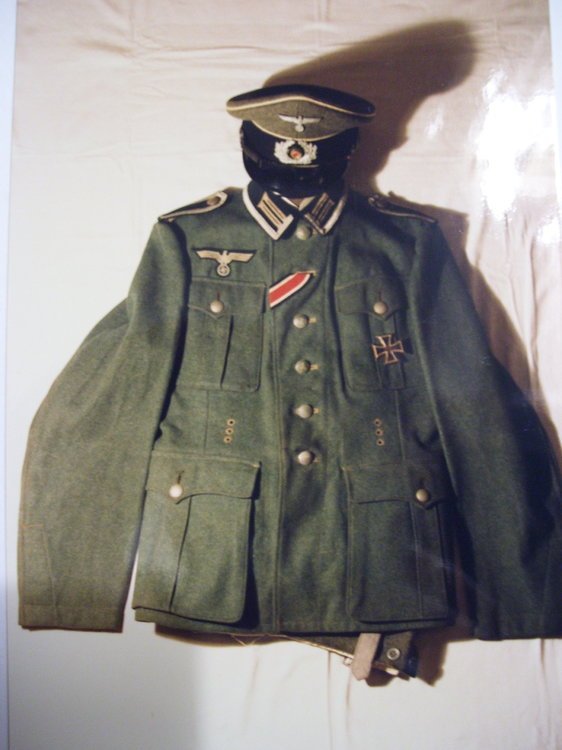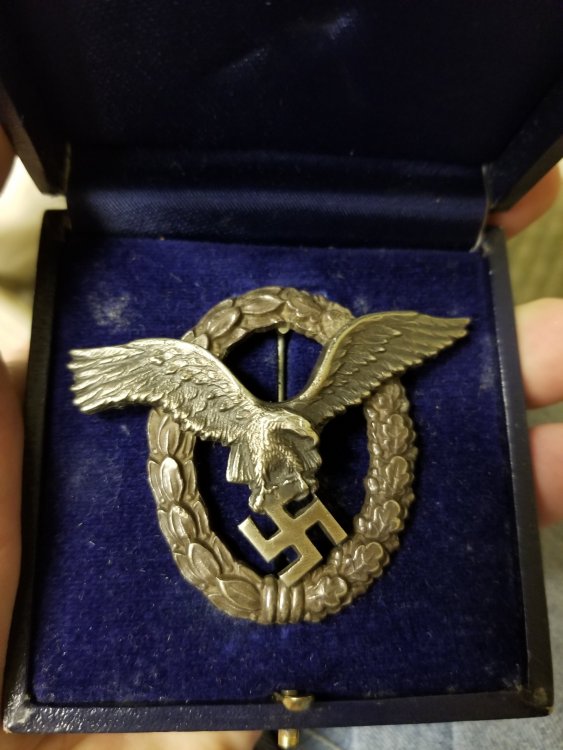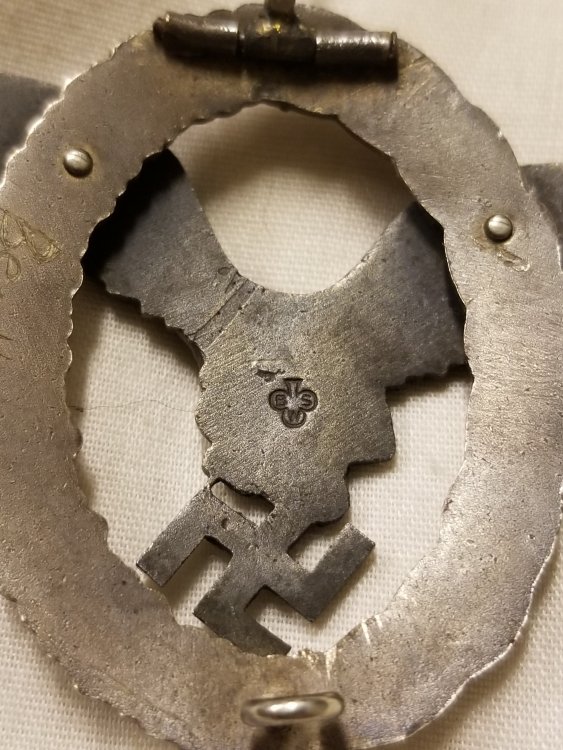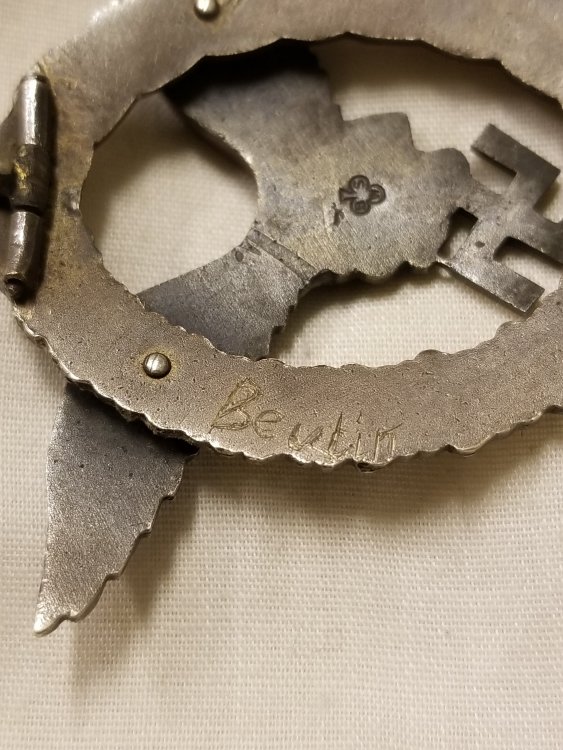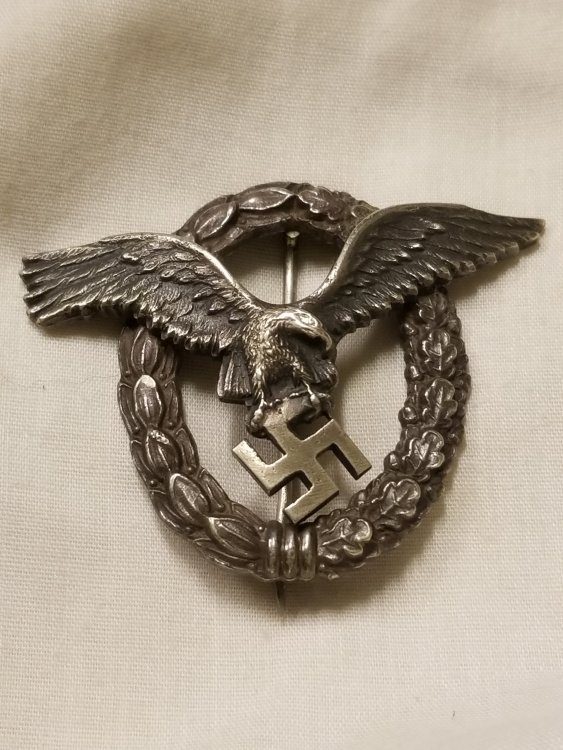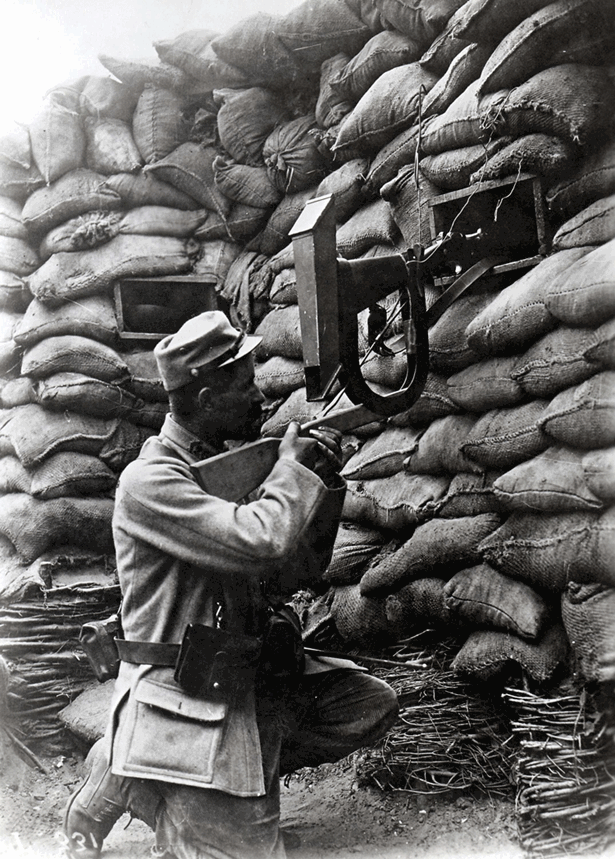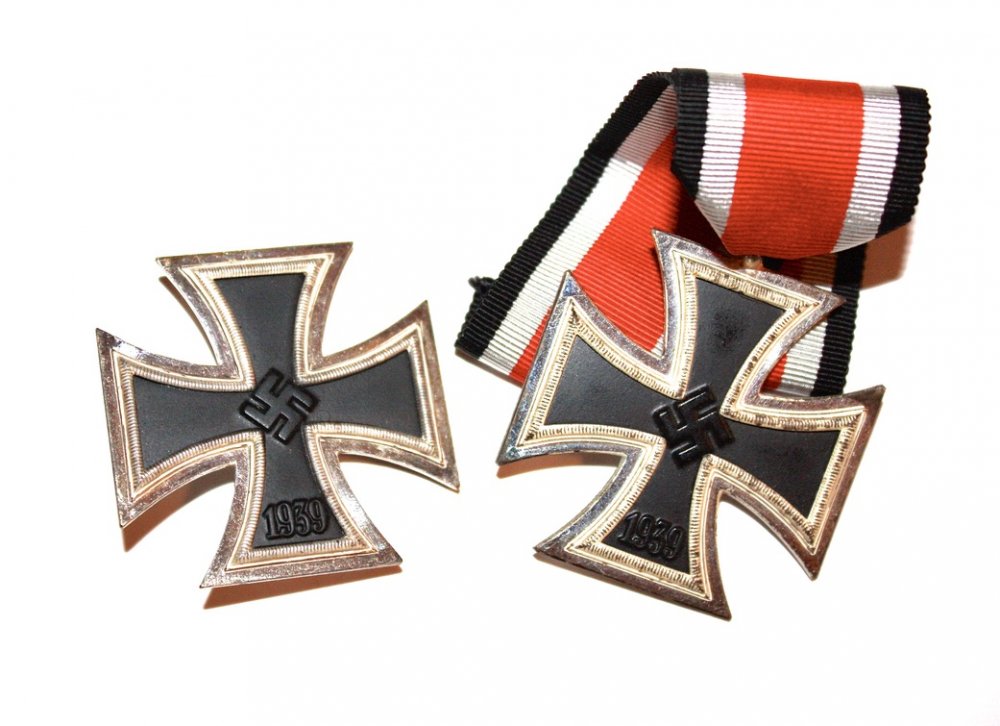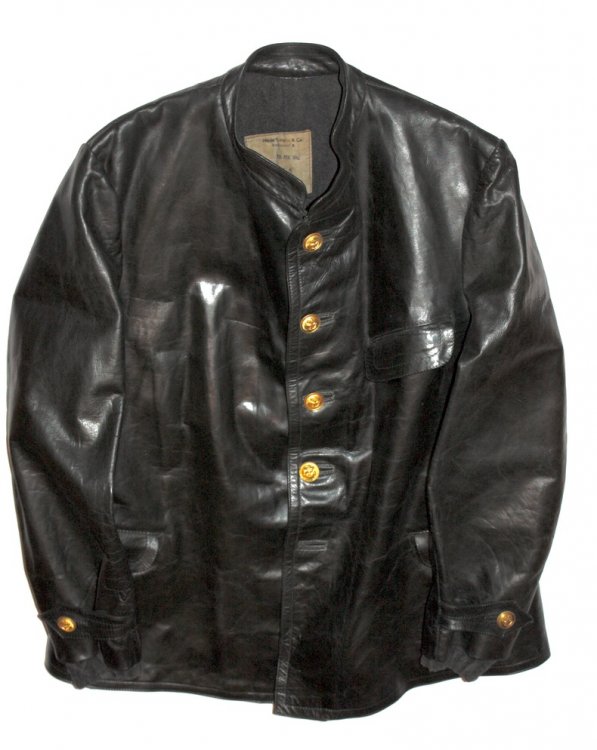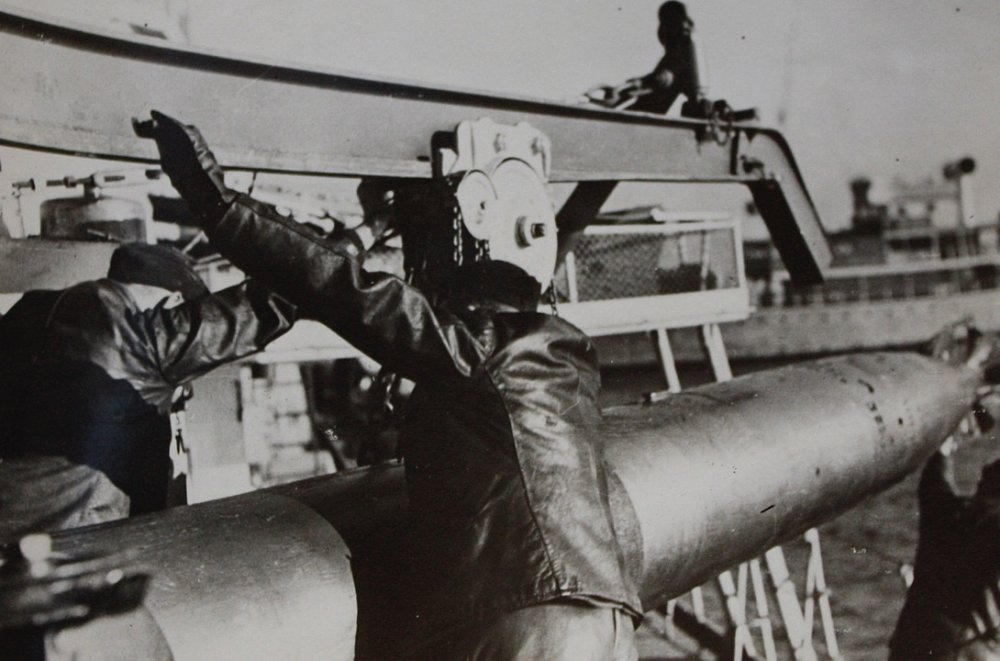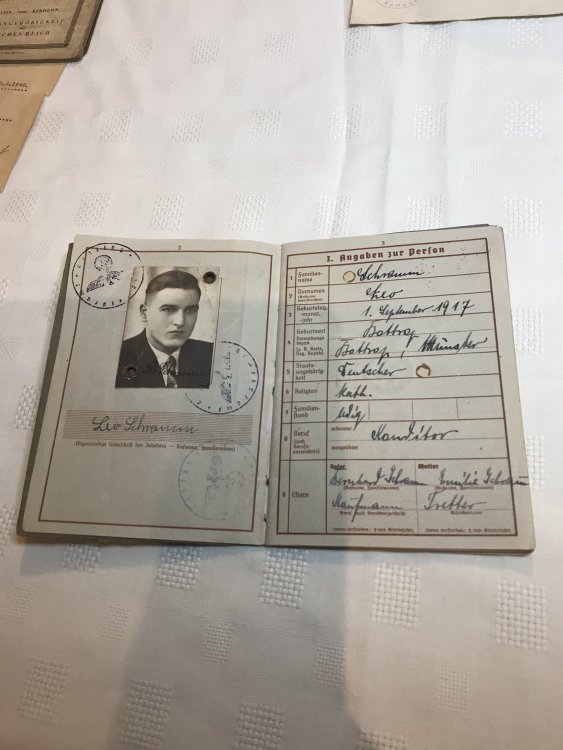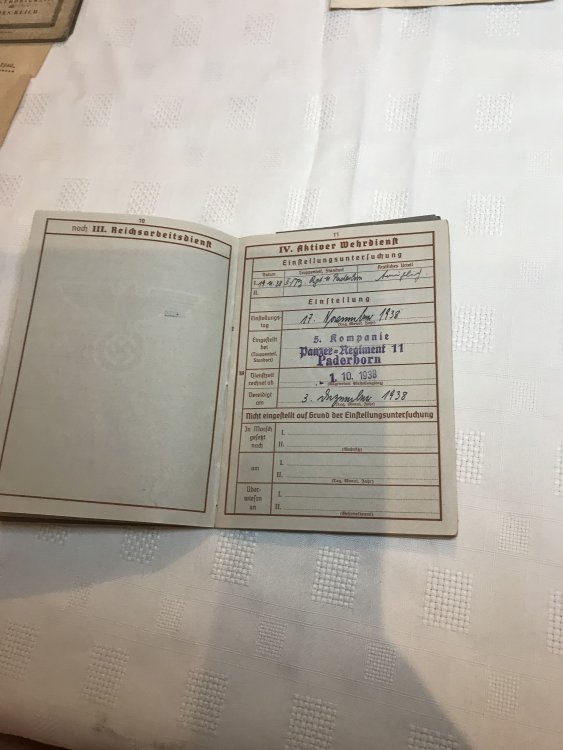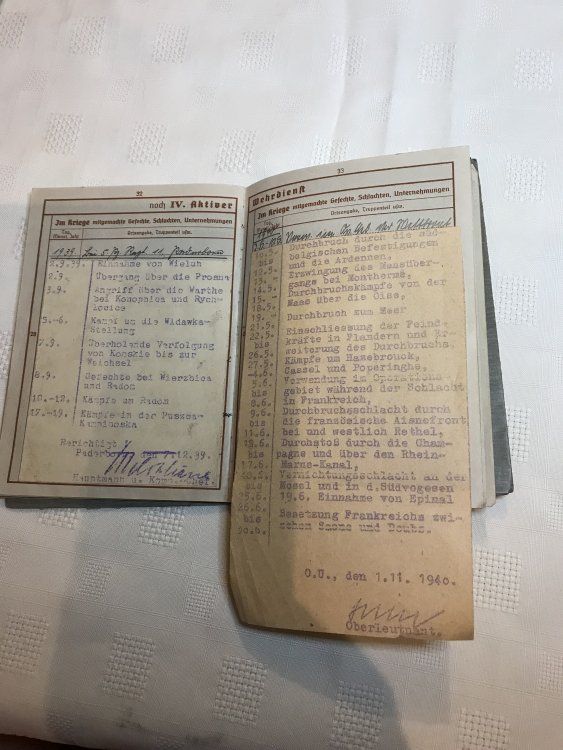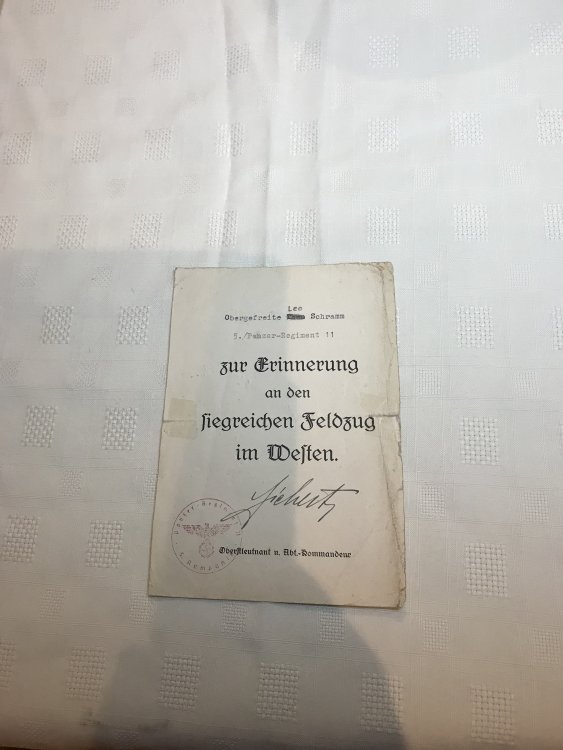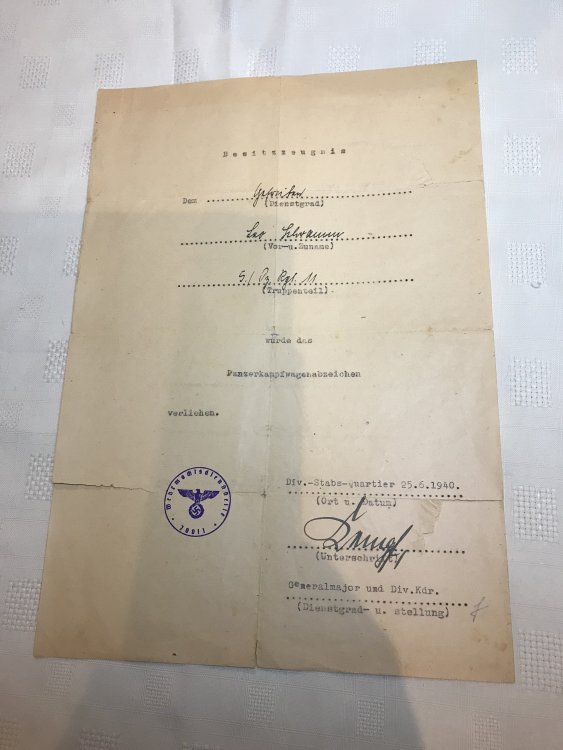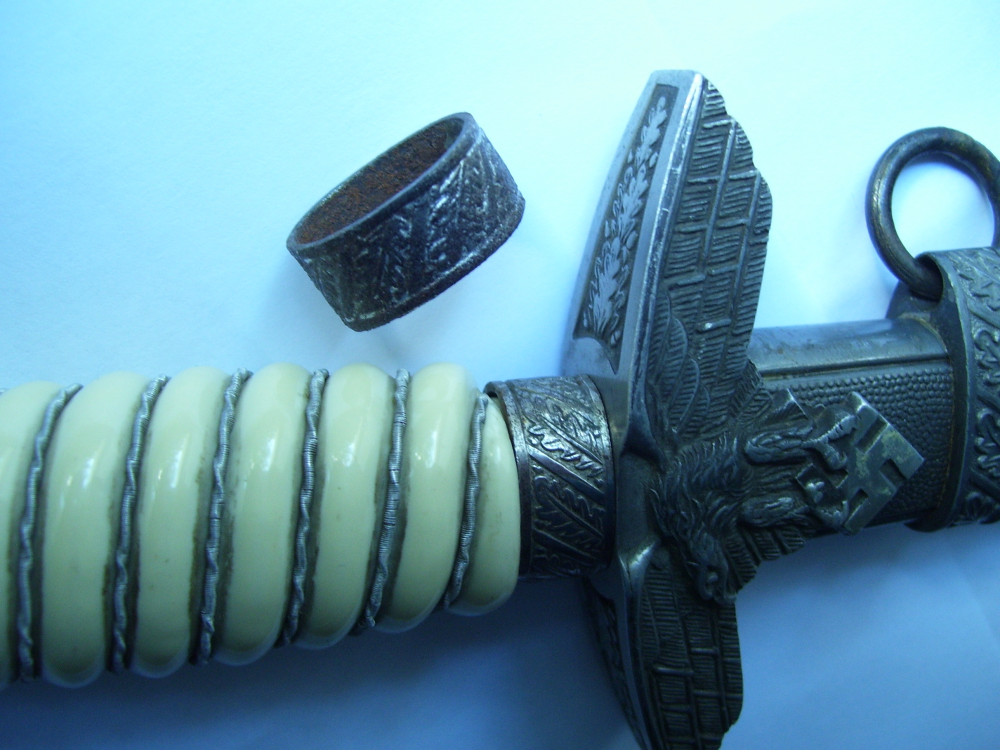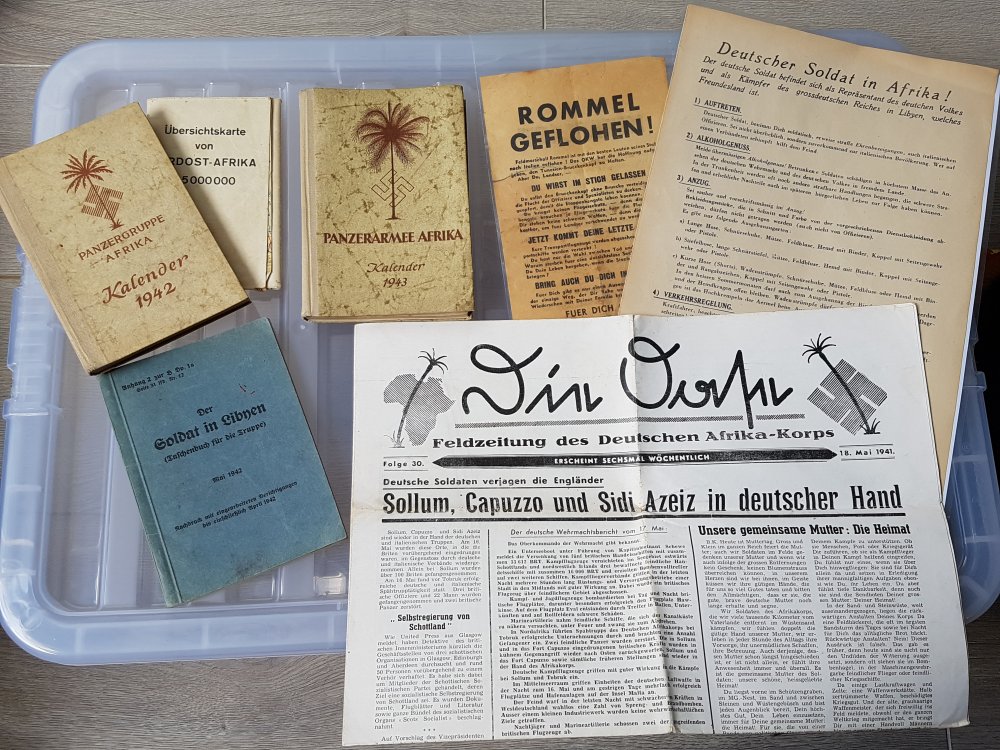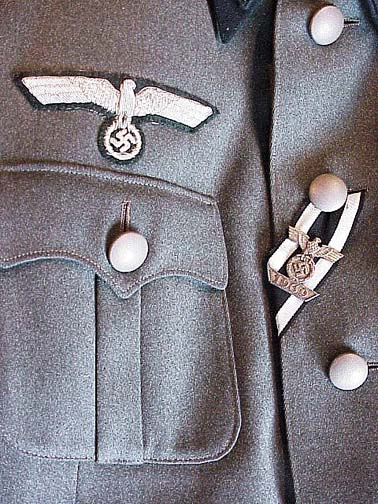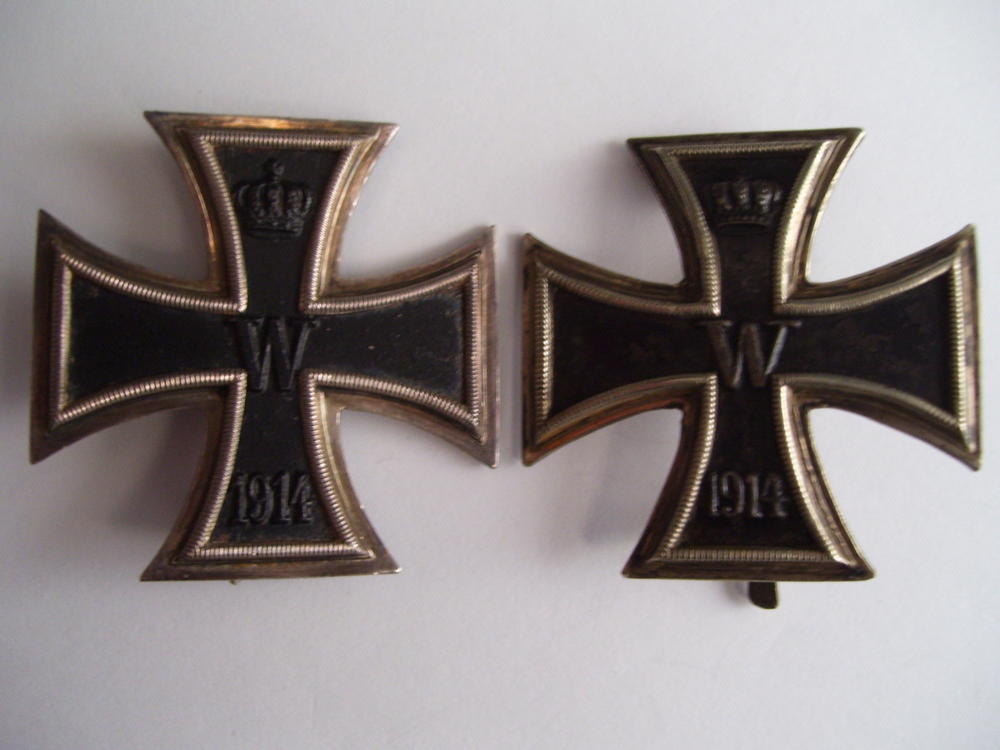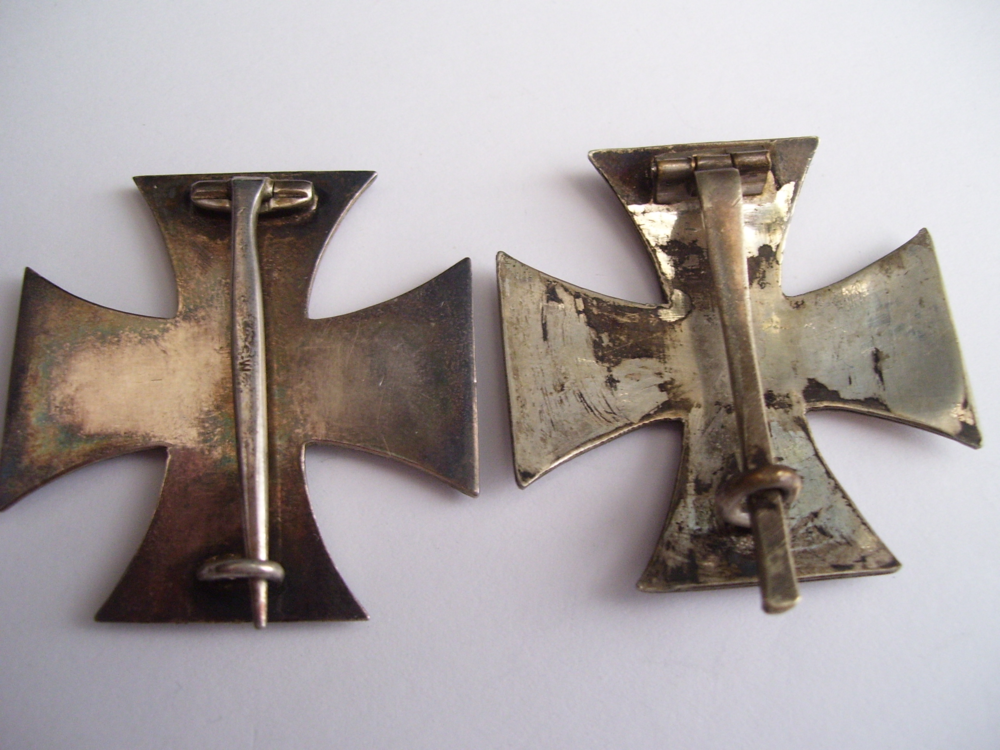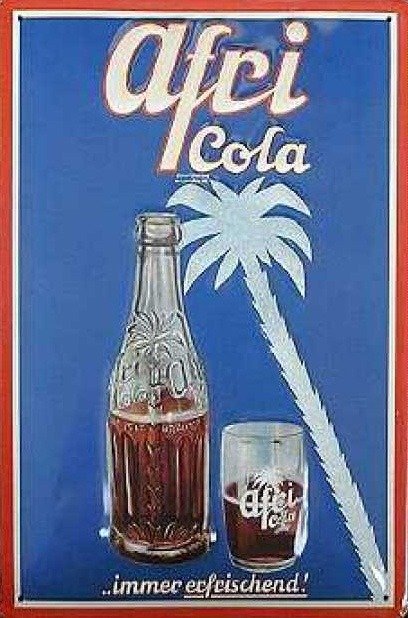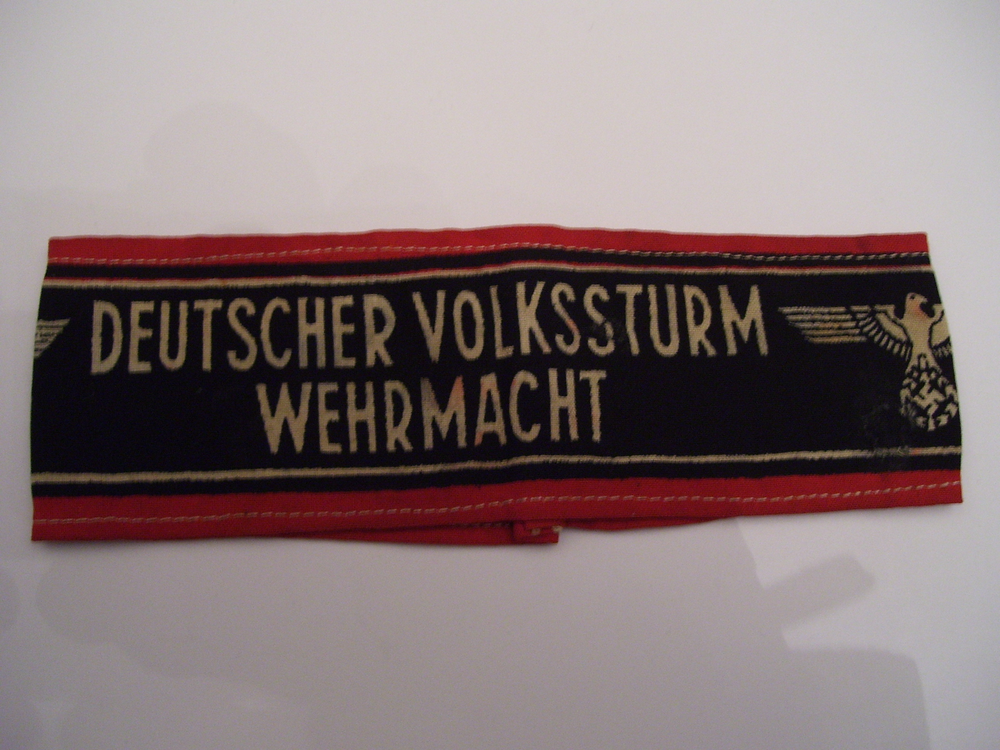Leaderboard
Popular Content
Showing content with the highest reputation since 21/04/12 in all areas
-
Here is my Deactivated WW1 Lewis Gun, this particular version was made for the Belgian Army, under contract from the Birmingham Small Arms Company (B.S.A.) in Birmingham, England. Although the Belgians did have a factory (Armes Automatiques Lewis Company at Liege) they did not make very many as most of Belgium was overrun by the Germans. The British could make 6 Lewis guns for the time and cost of making a single Vickers Machine gun. B.S.A. produced a total of 145,397 Lewis guns during World War I. The sling is a modern reproduction as real slings are extremely hard to come by. Original slings had the padding made from asbestos, so this one has a synthetic padded area that simulates the look. This weapon weighed in at 28 pounds and a fully loaded 47-round magazine was 4 pounds. Still a relatively light weapon compared to the static mounted machine guns like the U.S. made vickers (M1915) which weighed 42 pounds for the gun and another 56 pounds for the tripod. Maxim Machine guns weighed about 75 pounds as well. The big advantage of this weapon was its portability, it could be operated by a single soldier, and keep up with the infantry advances. These light machine guns were prized by the Germans who often would capture them and use them against the Allies.10 points
-
Here is a Bulgarian M36 Helmet, type C, which was the last version to be produced. Initially these helmets were made abroad, but machinery was moved to Bulgaria to allow for domestic production. The type C was introduced in 1939 and is the most numerous of the various models. The helmet is somewhat similar to the German helmets, but smaller, lighter, and a shorter brim. This particular helmet at a size 54, with the original liner, but missing the chinstrap. I found this at a local estate sale, and it was a cheap pickup.8 points
-
Here is my latest find, a VB Launcher for the US M1917 Enfield rifle. This is the twist on type, with a metal spring band to hold the sight and muzzle firmly while in operation. Un-Dug examples are very hard to find. Near the muzzle of the launcher you can see a knurled band, this was so that soldiers could feel the difference at night or in dark conditions. This version and the version for the M1903 Springfield are virtually identical, the M1903 does not have the knurled band however.8 points
-
Picture is a two-piece officer''s visor cover for junior grade from my collection of Kriegsmarine antiques. The cap has a hand-embroidered gilt wire national emblem and, cockade, as well as gold wire piping. This cap belonged to Werner Wendt (1916-1988), Captain of U-765. The U-765 was sunk in the North Atlantic on 6 May 1944 by depth charges on its first war parol. Werner and 10 crewmen survived, 37 dead. Pictured below is the underside view of the visor cap. Pictured below is the two-piece visor cover disassembled. In this configuration, a white or blue cap-covers could be worn. Because I do not like to take this cover apart, I used a photo taken years ago.7 points
-
Over 4000 views in such a short time, I think this post deserves to be pinned7 points
-
John, you have an amazing collection, really have enjoyed you sharing your items with us.7 points
-
From my collection are pictures of my Sold-Libellen KM-2 sextant with its original metal storage box. This sextant was manufactured for the Kriegsmarine by C.Plath. The SOLD KM-2 was developed for navigational use aboard U-boats and S-boats at night and/or in poor weather conditions when horizon not visible. For an in-depth review of this type of sextant, visit the link https://sextantbook.com/2013/11/04/the-sold-km2-bubble-sextant/. A view of KM-2 stored in its metal metal box. Note several accessories from the storage box are missing, but the original inventory label is present on inside of one of the two lids (not pictured). Top of metal storage box with access secured with side latches. The handle sides of KM-2 Sextant were the identification plate was once mounted but removed. View of the dial side of KM-2 sextant. The plate on dial is marked J.B., indiscernible mark, Geprütt Deutsche Seewarte (German Naval Observatory). Another view of dial side of KM-2 sextant. Topside view KM-2 sexton.7 points
-
7 points
-
7 points
-
7 points
-
7 points
-
7 points
-
7 points
-
Hi John333, It took me a long time to find a DECENT Ostfront medal. My advice would be to go for the shown medal if the price is reasonable to you as it is quite a nice example. Especially as it has a makers mark on the suspension ring. You can always keep looking for a better conditioned one and upgrade at a later date. So, if you don't have one yet, go for this one with an eye to upgrade at some point in the future. REALLY GOOD examples of this badge do not come up very often, and when they do they are snapped up quickly!7 points
-
7 points
-
Fritz: The answer to your question "I assume the buttons on the leather crew jacket are probably of gilded glass? " is "No." All the buttons on the black leather jacket in my collection are of two-piece metal construction with a fouled anchor gilt front and the backs are marked BESONDERS HALTBAR 'Particularly Durable' with makers symbol. A black leather jacket like mine with gilt fouled anchor buttons can be seen below on page 263 of Volume 2, Die Kriegsmarine Uniforms and Traditions by John R. Angolia and Adolf Schlicht. Pictured below is the back of a two-piece metal fouled anchor button on my black leather jacket. Note that various manufactured produced buttons that were used in making black leather jackets for the Kriegsmarine. Along with my black leather jacket having metal gilt buttons pictured below, note that this jacket has the Kriegsmarine ordnance mark (Eagle over M) between two fouled anchor buttons. The Kriegsmarine proof mark like the one on my jacket is pictured below on page 265 of Volume 2, Die Kriegsmarine Uniforms and Traditions by John R. Angolia and Adolf Schlicht. The collar of the neck was closed up by a metal clasp like the one below on my jacket. Note the front corner of the low standing collar are rounded and the button holes are reenforced with a narrow leather trim. Pictured is the interior of my jacket, which is lined with wool. Also I have enclosed a picture of the back of this jacket. For further information I havedenclosed page 288 of Deutche Kriegsmarine Uniforms, Insignia and Equipment of the German Navy 1933-1945 by Eduardo Delgado.7 points
-
Hi Eddie, I'm afraid the serial number is just a batch number so would not identify the U boat. Sometimes you will find the letter N which would identify them as belonging to the German Navy North Sea Fleet. Sorry can't help much more. Here is a list of the makers codes but no list of serial numbers as far as I'm aware. b e h ERNST LEITZ. WETZLAR GERMANY b e k HENSOLDT WERK FUR OPTIK UND MECHANIK HERBORN GERMANY b l c CARL ZEISS, MILITARABTEILUNG JENA JENA GERMANY b m h JIRASEK (not in Walter) PRAGUE CZECH b m j M. HENSOLDT & SOHNE, A.G. WETZLAR GERMANY b m t C. A. STEINHEIL SOHNE, GmbH MUNICH GERMANY b p d C. P. GOERZ, GmbH VIENNA AUSTRIA b v f C. REICHERT VIENNA AUSTRIA b y g JOH. WYKSEN, K.G. KATTOWITZ POLAND b z z I.G.-FARBENINDUSTRIE, CAMERAWERK MUNICH GERMANY c a d KARL KAHLES (telescopic sights) VIENNA AUSTRIA c a g D. SWAROVSKI WATTENS/TIROL AUSTRIA c a u KODAK AKTIENGESELLSCHAFT, DR. NAGEL WERK STUTTGART GERMANY c c x OPTISCHE UND FEINMECHANISCHE WERKE, HUGO MEYER & CO. GOERLITZ GERMANY c l b DR. F. A. WOHLER KASSEL GERMANY c l n ED. SPRENGER BERLIN GERMANY c r h FRANZ SCHMIDT & HAENSCH BERLIN GERMANY c r n HANSEATISCHE WERKSTATTEN FUR FEINMECHANIK UND OPTIK, FRIEDRICHS & Co. HAMBURG GERMANY c r o R. FUESS, formerly J. G. GREINER & GEISSLER BERLIN GERMANY c x n EMIL BUSCH, A.G. RATHENOW GERMANY d d v OCULUS (optometrist equipment, possibly gunsights) BERLIN GERMANY d d x VOIGTLAENDER & SOHN, A.G. BRAUNSCHWEIG GERMANY d k l JOSEF SCHNEIDER KREUZNACH GERMANY d o q DEUTSCHE SPIEGELGLAS A.G. (telescopes, lenses) LEINE GERMANY d o w WAFFENWERKE BRUNN A.G. (1943-OPTICOTECHNA GmbH) PRERAU CZECH. d p g ADOX KAMERAWERK GmbH (cameras) WIESBADEN GERMANY d p v ZEISS IKON A.G. DRESDEN GERMANY d p w ZEISS IKON A.G. GOERZWERK BERLIN GERMANY d p x ZEISS IKON A.G., CONTESSAWERK STUTTGART GERMANY d y m RUNGE & KAULFUSS RATHENOW GERMANY d y s HEINRICH ZEISS, UNIONZEISS K.G. ('apparently optical' BERLIN GERMANY d z l OPTISCHE ANSTALT OIGEE GmbH BERLIN GERMANY e a f MECHANOPTIK GESELLSCHAFT FUR PRAZISIONSTECHNIK, AUDE & REIPERT BABELSBERG GERMANY e a w R. WINKEL GmbH GOETTINGEN GERMANY e e d KURBI & NIGGELOH (photographic equipment) RADEVORMWALD GERMANY e s o G. RODENSTOCK MUNICH GERMANY e s u STEINHEIL SOHNE GmbH (telescopes & optics) MUNICH GERMANY e u g OPTISCHE PRAZISIONS WERKE GmbH WARSAW POLAND f c o SENDLINGER OPTISCHE GLASWERKE GmbH BERLIN GERMANY f j t PHOTOGRAMMETRIE GmbH (aerial recon. cameras) MUNICH GERMANY f l n FRANZ RAPSCH A.G. (sights, often subcontractor to Busch) RATHENOW GERMANY f v s SPINDLER & HOYER K.G. GOTTINGEN GERMANY f v x BECK & SOHNE KASSEL GERMANY f w r OPTISCHE ANSTALT SAALFELD GmbH SAALFELD GERMANY f x p HANS KOLLMORGEN GmbH BERLIN GERMANY g a g F. MOLLENKOPF STUTTGART GERMANY g k p RUF & Co., formerly CARL SCHUTZ KASSEL GERMANY g u g UNGARNISCHE OPTISCHE WERKE A.G. BUDAPEST HUNGARY g u j WERNER D. KUEHN BERLIN GERMANY g w v ERNST PLANK NURNBERG GERMANY g x l FRANKE & HEIDECKE (photographic equipment) BRAUNSCHWEIG GERMANY g x p HOMRICH & SOHN (photographic equipment) h d v OPTISCHE WERK OSTERODE GmbH OSTERODE GERMANY h f o VALENTIN LINHOF OHG (photographic equipment) MUNICH GERMANY h k m CARL BRAUN KG NURNBERG GERMANY h n a KORELLE WERKE, G.H. BRANDTMANN & Co. (photographic) DRESDEN GERMANY h r w HOH & HAHNE (photographic reproduction equipment) LEIPZIG GERMANY h w t IHAGEE KAMERAWERK, STEENBERGEN & Co. (cameras) DRESDEN GERMANY h x h A. KRUSS HAMBURG GERMANY j f n TETENAL PHOTOWERK, Dr. TRIEPEL, K.G. (photographic equipment) BERLIN GERMANY j f p DR. CARL LEISS BERLIN GERMANY j n h F. TUTEMANN (lens holders & optical equipment) LUDENSCHEID GERMANY j o n VOIGTLANDER-GEVAERT (cameras) BERLIN GERMANY j u x NEDINSCO, NEDERLANDSCHE INSTRUMENTEN, (vehicle & aircraft instruments?) VENLO NETHERLANDS j v e ERNST LUDWIG WEIXDORF GERMANY j x n HELMUT KORTH BERLIN GERMANY k h c OTTO HIMMLER (microscopes, optical equipment) BERLIN GERMANY k l n ERNST & WILHELM BERTRAM (photographic equipment) MUNICH GERMANY k n a DER ROBOT, BERNING & Co., K.G. (photographic equipment) DUSSELDORF GERMANY k q c JOS. SCHNEIDER & Co., K.G. GOETTINGEN GERMANY k r q EMIL BUSCH A.G. (assembled from foreign components) RATHENOW GERMANY k w c GAMMA FEINMECHANISCHE & OPTISCHE WERKE BUDAPEST HUNGARY k x v A. JACKENROLL GmbH BERLIN GERMANY l a e HEINRICH ZEISS, UNION ZEISS K.G. GOSTINGEN l f n REFLEKTA-KAMERAFABRIK, C. RICHTER (cameras) THARANDT GERMANY l m q CARL ZEISS (assembled from foreign components) JENA GERMANY l w g OPTISCHE WERKE OSTERODE GmbH (assembled from foreign components) OSTERODE GERMANY l w w HUET ET CIE PARIS FRANCE l w x OPTIQUE ET PRECISION DE LEVALLOIS, PARIS LEVALLOIS-PERRET FRANCE l w y SOCIETE OPTIQUE ET MECANIQUE DE HAUTE PRECISION PARIS FRANCE m b v I.G. FARBENINDUSTRIE, A.G.; AGFA (cameras) BERLIN GERMANY m c a FOTOWERK, Dr. C. SCHLEUSSNER, GmbH (photographic equipment) FRANKFURT GERMANY m t q PHOTOCHEMISCHE FABRIK ROLAND RISSE GmbH (photographic equipment) FLORSHEIM GERMANY m t r VOIGTLANDER & SOHN, A.G. (cameras) BERLIN GERMANY m t u A. LORENZ (MTU also used for AEG electrical equipment) GUTENFELD m t v A. LORENZ DRESDEN GERMANY n m s RICHARD HOLZ BERLIN GERMANY n x t S.A.I. OTTICO MECCANICA E RILEVAMENTI AEROFOTOGRAMMETRICI (stereoscopic aerial photography equipment) ROME ITALY o c p AKTOPHOT GmbH (photographic equipment) PRAG-SABECHTLITZ o c v W. KLAZAR (precision engineering; reportedly photographic equipment) PRAG o k c HAUFF A.G. (photographic equipment) STUTTGART GERMANY p v f C. REICHERT VIENNA AUSTRIA r l n CARL ZEISS JENA GERMANY A.G. = AKTIENGESELLSCHAFT; JOINT STOCK COMPANY GmbH = GESELLSCHAFT MIT BESCHRANKTER HAFTUNG; LIMITED COMPANY I.G. = INTERRESENGEMEINSCHAFT; UNION OF INTERESTS K.G. = KOMMANDITGESELLSCHAFT; LIMITED PARTNERSHIP OHG = OFFENE HANDELSGESELLSCHAFT; PRIVATE FIRM (literally, 'open trading company')7 points
-
Hello all Another new member seeking Historical WWII information. I recently inherited some German WWII memorabilia from a close family friend whose husband just passed away. They emigrated here to Canada in 1980. Their parents and relatives were part of the war effort in Germany during WWII. Her father was in the Luftwaffe and his items are displayed en mass in one photo. Her uncle was in the 5th SS Wiking division and his items are in the second and third photo's. I will be receiving more information and possibly photos when she receives them from her mother who is still alive in Germany. I am not an expert on these types of items however I do have a keen interest in WWII Hx. Any info or referencing to other sources would be hugely appreciated. I am looking to preserve these items in frame along with my families war memorabilia from that era. Thanking you all in advance.7 points
-
7 points
-
7 points
-
7 points
-
7 points
-
7 points
-
7 points
-
7 points
-
7 points
-
Pictured from my collection is an optical gunsight for a 3.7 cm anti-aircraft gun (Flak M42) manufactured for the Kriegsmarine. The code for this manufacture is 'dow' (Waffenwerke Brunn A.G. (1943 - Opticotechna Gmbh, Prerau Czech.)). The optic has a wide field of view with a ranging reticle. Even though designed to withstand harsh environments, this optic was made to be removed from the weapon system mounted on an U-boat .6 points
-
Alexander Beveridge No 1191 1/6th Battalion Argyll & Sutherland Highlanders, born 3rd Feb 1892 Eastwood Renfrewshire to parents George and Elizabeth one of six children living at 24 Bengal st Pollokshaws Glasgow. At the age of 17 yrs old he enlisted on the 22 March 1909 in the Princess Louises 1/6th Argyll and Sutherland Highlanders at Pollokshaws he was a printer by trade. From 1909 to 1913 he did Annual Training and Drills, he was Embodied in to the Regular Army in 1914 and given a new No 250430. In May 1914 the 1/6th Battalion was part of the 152nd Brigade in the 51st ( Highland ) Division, and in Sept were moved and stationed at Bedford doing Coastal Defence work. In April 1915 the Division crossed the channel between 30 Apr and 3 May to France and by the 6 May had concentrated at Lillers, Busnes and Robecq. It was later hurried to the defence of Ypres. And later moved again South to an area North of the river Somme and relieved a French Division near Hamel. Alexander was employed as H Company Cook and on 1st Dec 1915 he was admitted to hospital suffering with Myalgia = ( Repetitive Strain Injury ), he rejoined his Battalion on the 13 Feb 1916. On the 26 June 1916 the 1/6th Battalion was transferred to the Divisional Engineers and Pioneers in 5th Division and became a Pioneer Battalion. Alexander was wounded on the 26 Sept 1916 with a G.S.W. ( Gun Shot Wound ) to his right thigh and arm and admitted to Hospital and later sent by ship to the Kitchener Hospital in Brighton on the 13 Oct 1916 and granted a Furlough from 1 Nov to 10 Nov 1916, after he had recovered from his injures he Joined the 1/5th Battalion in Egypt on the 11 Aug 1917. He saw action in the following battles the First, Second, and third battles of Gaza. In the Spring of 1918 the 52 Lowland Division was moved to France to help stem the mighty German Offensive. In June the 1/5th Battalion left the 52 Division to join the 103 Brigade of the 34th Division which concentrated at Senlis, and came under orders from General Petain, he was in command of the 30th Corps of the French 10th Army on the Marne Front, during the Battles of the Soisonnais and Ourcq 20 July to 2 Aug 1918. Alexander was wounded on the 29 July with a gun shot wound to his right hand,on the 2 Aug he was sent back to the UK on the Hospital ship Warilda sailing from Le Harve to Southampton. On the 3 Aug 1918 the Warilda was sunk by UC49 in the English Channel and 123 persons died with Alexander being one of them he is remembered on the Hollybrook Memorial Southampton, and on the Pollokshaws Burgh Hall Memorial Cross.6 points
-
Pictured from my collection is on more 7x50 power binoculars, but manufactured by Ernest Leitz (beh). The Binoculars have original leather neck strap, as well as rubber armor. Binoculars like this one is pictured on page 423 and 424 in Deutsche Kriegsmarine Uniforms, Insignias and Equipment of thw German Navy 1933-1945 by Eduardo Delgado.6 points
-
Pictured from my collection is another set of 7x50 power binoculars, but manufactured by Cark Zeis Jena. The Binoculars have original leather neck strap, as well as a ranging reticle in right ocular. Binoculars like this one is pictured on page 233 in in Volume 3 of Die Kriegsmarine Uniforms & Traditions by John R. Angolia and Adolf Schlicht.6 points
-
Picture from my collection is a 'Grid System' map of the southern part of the Aegean Sea that is an elongated embayment of the Mediterranean Sea. This system of mapping was used by the Kriegsmarine for locating, reporting, and vectoring its ships and U-boats. See the below link below the image to learn about the German Naval Grid System used during WWII. https://en.wikipedia.org/wiki/German_Naval_Grid_System6 points
-
Hi everyone, I'm looking for uncommon color photos taken during WWII by the British, not painted but real color photographs like those amazing Kodachrome sometimes I find. Here some examples. thanks you all PARATROOP TRAINING IN BRITAIN, OCTOBER 1942 19 October 1942 Parachute Training in Britain. Half length portrait of a paratrooper carrying a Sten gun, having loaded it ready for immediate action. A 15cm gun crew from the 75th Shropshire Yeomanry Medium Regiment, Royal Artillery, in action in Italy, September 1943. Notice the soldiers heavily bandaged thumb on the right. March 1944 – Private Alfred Campin of the 6th Battalion, Durham Light Infantry during battle training in Britain.6 points
-
6 points
-
6 points
-
Here is my newly completed WW1 French replica trench periscope rifle. The periscope is original, the rest is newly made. This was based upon period photo's as I could not find anyone with a real one for detailed examination. However this one functions just as a real one should, last image is of a period model. Trench periscope assemblies are very difficult to find today, and I am lucky enough to have one original (German model).6 points
-
It's quite a long time ago but (probably) the most interesting SS cuff title I ever owned came from yourself, Kenny, an issued and nicely worn condition embroidered RZM pattern "Frw. Legion Norwegen" title. I had popped into your shop on a rare visit to Glasgow and you had it up for sale along with a similar embroidered Frw Legion Niederlande title, it was also used condition but still stitched together in a loop, right off the sleeve. Both were totally original titles - wish I could have bought them both but could only afford one at the time. Really rare things in collecting terms.6 points
-
Good evening and thanks for all the work you put in here. I was looking at the piece below and was wondering if you had any thoughts. Not enough info for me to make a decision unfortunately so wondering if there is anything you could add here. It is maker marked however. I was mostly concerned with how fresh the paint appeared initially.6 points
-
Pictured are my 'Eiserne Kreus II. Klasse (EKII)' Iron Cross Second Class (right) and an 'Eiserne Kreus I .Klasse (EKI)' Iron Cross First Class (left). As you probably know, these awards were presented to a serviceman of the German Armed Forces for an act of valor in combat. Both crosses were manufactured by the firm Rudolf Wachtler & Lange (maker mark 100). View the below video regarding the history of the German Iron Cross.6 points
-
Pictured from my collection is a black leather jacket designed for the Kriegsmarine to be worn in a hazardous environment like an engine room aboard U-Boats and surface vessels. This jacket was tailored in 1942. A jacket like this one is pictured on page 263 in Volume 2 of Die Kriegsmarine Uniforms & Traditions. Pictured from my collection is a press photograph taken while a torpedo is being moved. In this picture, crewmen are wearing issued black leather jackets.6 points
-
I think it looks ok, blade might have been re-blued as it does not match the wear on the rest of the bayonet. Mundlos marked these bayonets in this manner until 1941, afterwards they used the letter code "ab" until 1944. Early dated types are more common, the 1944 dated bayonets are much harder to find from this maker.6 points
-
I would leave it as it is, it's been that way for a long time and probably adds a bit of character, also nice to see how they are constructed. If you wanted another in nice condition you could always pick one up.6 points
-
Here is a nice early grouping for all you panzer guys. Leo Schramm, 5th Kompanie, 11th Panzer Regiment, saw action all through Poland and France in 1939/40, won the PAB when it was know as the Panzerkampfwagenabzeichen, received his Service in the West certificate. He was part of Panzer Regiment 11 who were in turn part of the 6th Panzer Division. He was associated with Panzer 35 (t)’s. He was killed on 26th June 1941 at the Battle of Raseiniai, where the GermanPanzer 35(t)’s were no match for the Russian heavy tanks and were effectively routed. This grouping consists of his fully filled out Wehrpass, his passport (minus front cover), his service in the West Cert, and his Panzer badge citation made out as the Panzerkampfwagenabzeichen which was the name of the PAB prior to June 1940.6 points
-
6 points
-
Just arrived yesterday, took ages with the post... Grip ring for a 2. pattern Luftwaffe dagger, iron, hard to find, as a replacement for a somewhat corroded piece. Kaiserliche Marine, officer uniform button, 25mm, marked "Feuervergoldet" Bavaria, a matching (left and right) pair of shoulder buttons, 17mm for the fieldgrey uniform, (hollow backed) tombak bronze, other ranks' issue Other ranks' cap cockades, Baden and Bavaria for the private purchase peaked or peakless cap6 points
-
Here is a Heinkel He 111 which is being restored at former RAF Hawkinge, the work has been delayed a lot over the years, but gradually progressing. Originally a Casa which took part in the Battle of Britain film in 1969, it returned to Spain, where it detiorated in the years following. It arrived in England at the end of the 1990s and was at storage with the Imperial War Museum. It has now been finished in the colours of A1+DA of Kampfgeschwader 53, which was shot down near Woolwich Arsenal in 1940.6 points
-
6 points
-
The 1914 Bar is for the 1870 Iron Cross, the 1939 Bar is for the 1914 Iron Cross. Note the difference between the 1914 and the 1939 ribbons, latter is red/white/black. Sorry to hear about your father. 1870 Iron Cross with Bar 1914 and Jubilee oakleaf 1914 Iron Cross with Bar 1939 1939 Bar as worn (example: internet photo) Iron Cross 1939 on correct ribbons 2 examples of E.K.I 1914, first example has a maker's mark on the pin, S.W., Sy & Wagner, Silver second piece, alloy with silver content, has no maker' mark and a rather unusual pin, the cross is convex in shape, which maybe makes it sit better on the uniform, a preference of the wearer. An extra piece, which the wearer has privately purchased, these decorations were readily available to those who were entitled to it.6 points
-
Here is another WW2 Era German Beverage bottle, this one is called Afri-Cola. Afri Cola was a direct Coca Cola knock-off. The bottle was heavily molded in the fashion of Coke bottles and the two-part name and logo were reminiscent of Coke. They even sold it for consumption in Coke "shaped" glasses. The trademark symbol was a palm tree. The description of the contents, the trade mark protection data, and even the dating code on the bottle was copied almost verbatim from a Coca Cola bottle. On the bottom edge it reads "Hersteller der Afri-Urprodukte Bluna-Koln 18" in the center it reads "0.25l Ge 2241"6 points
-
6 points
-
6 points







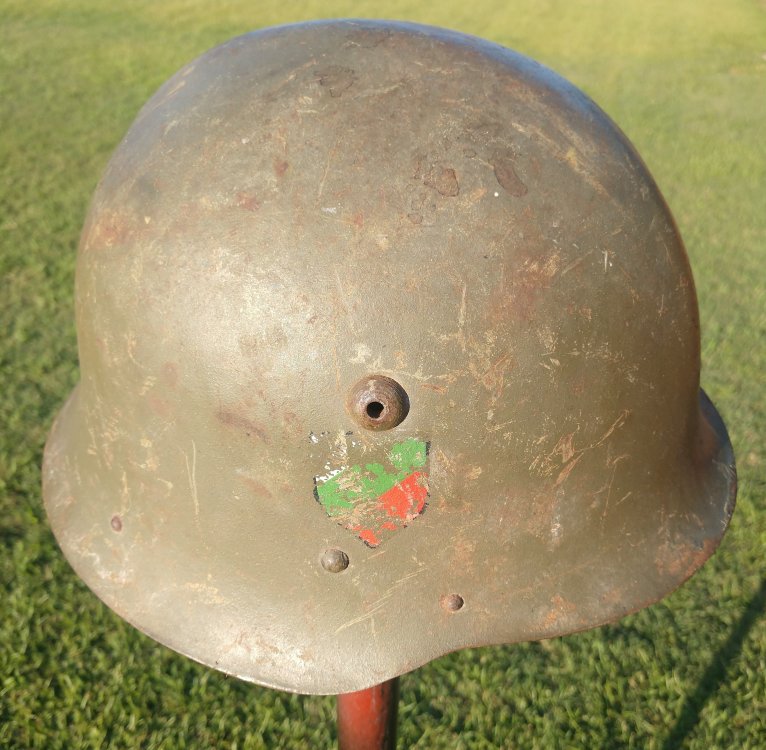
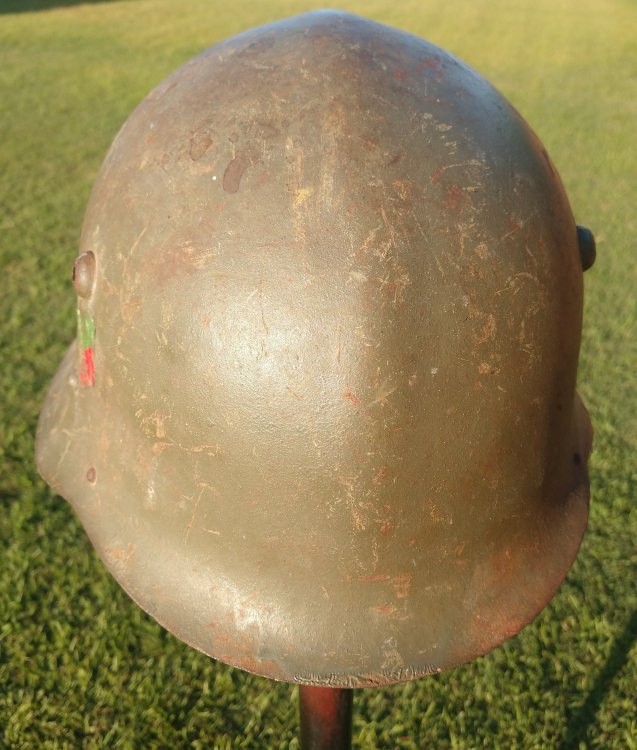
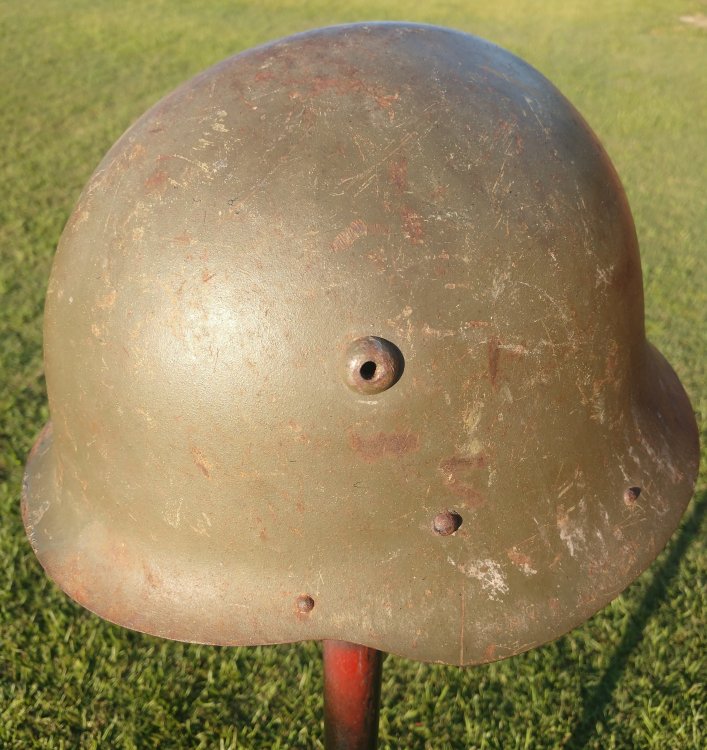
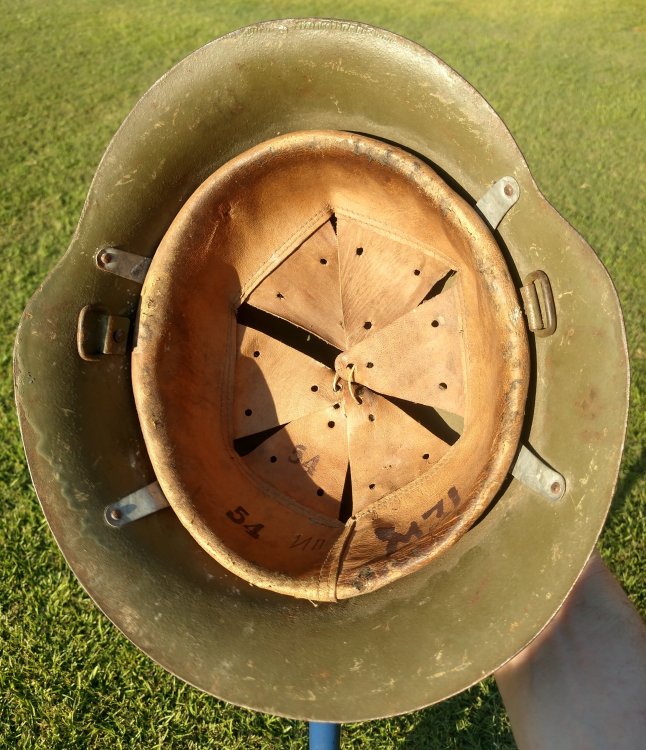
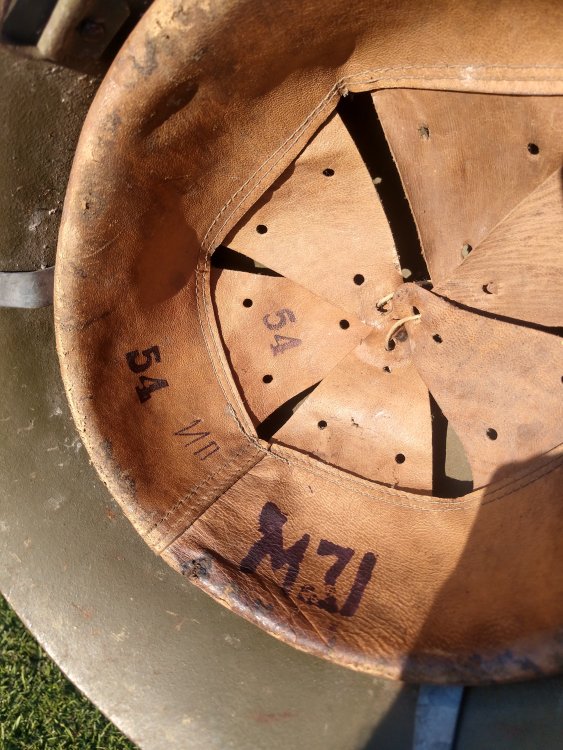

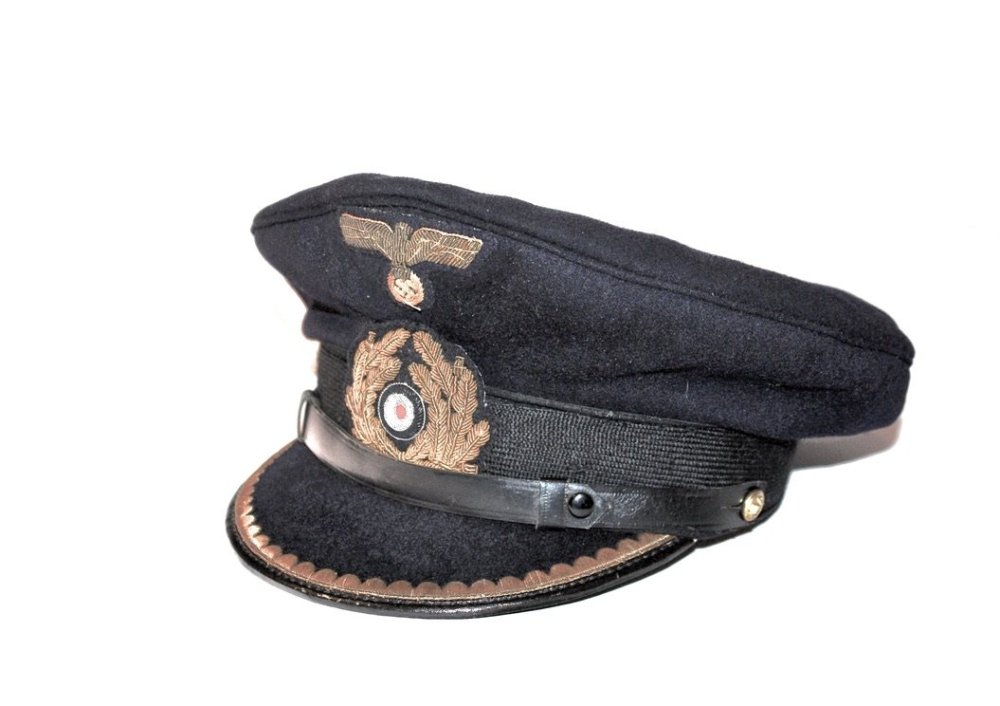
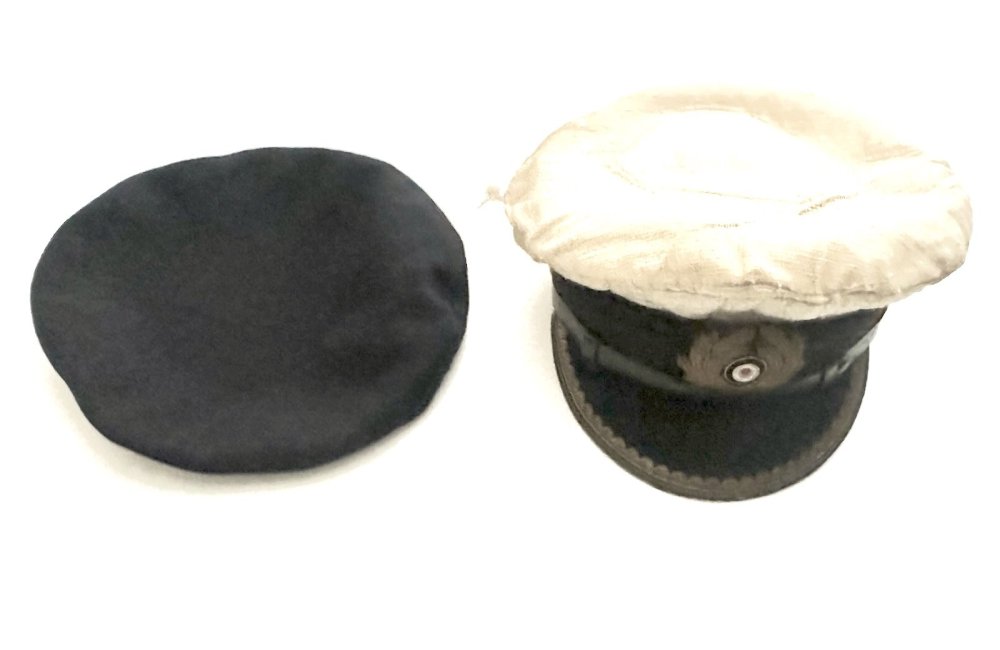
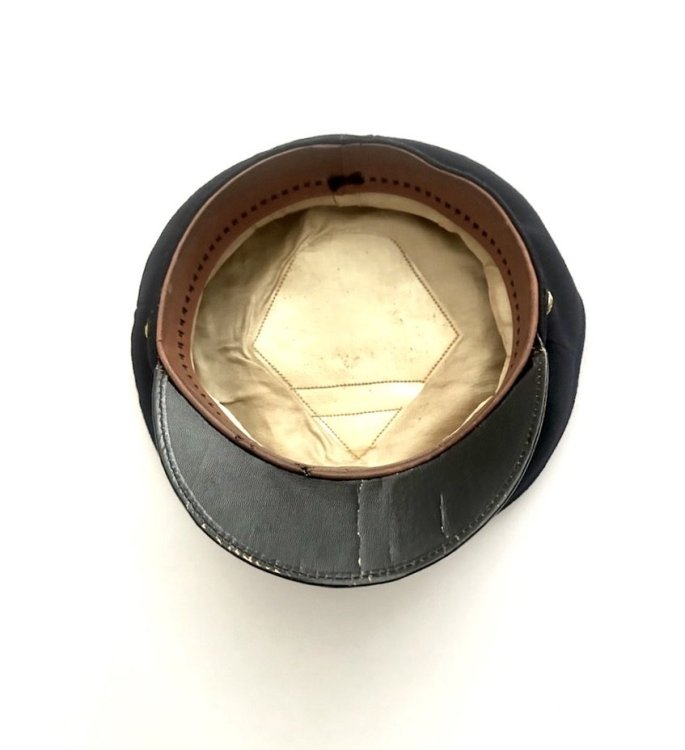
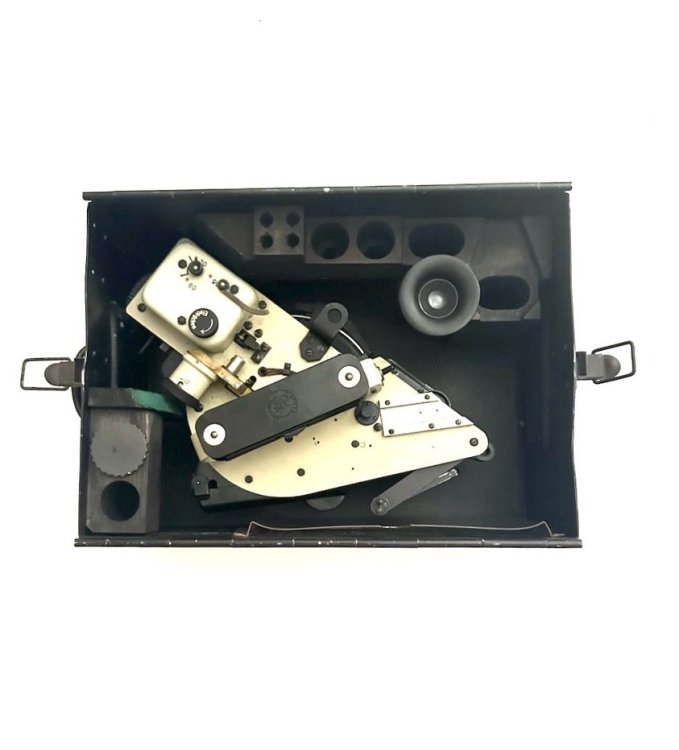
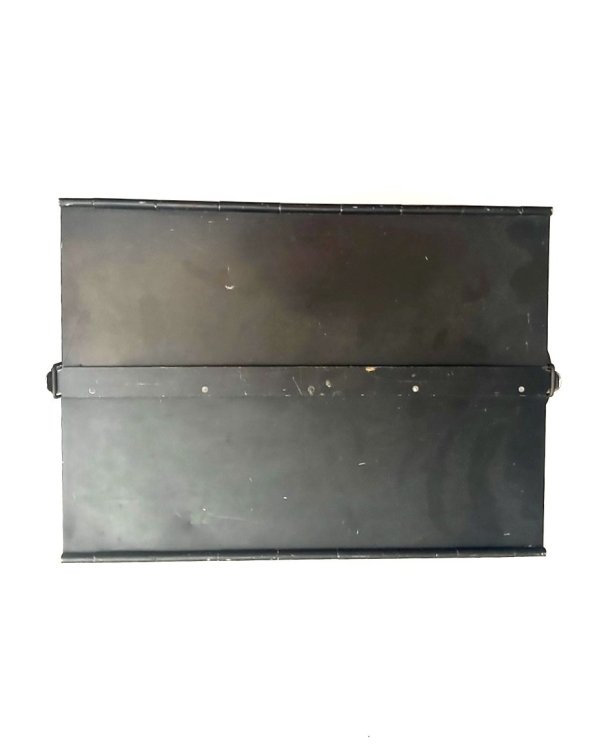
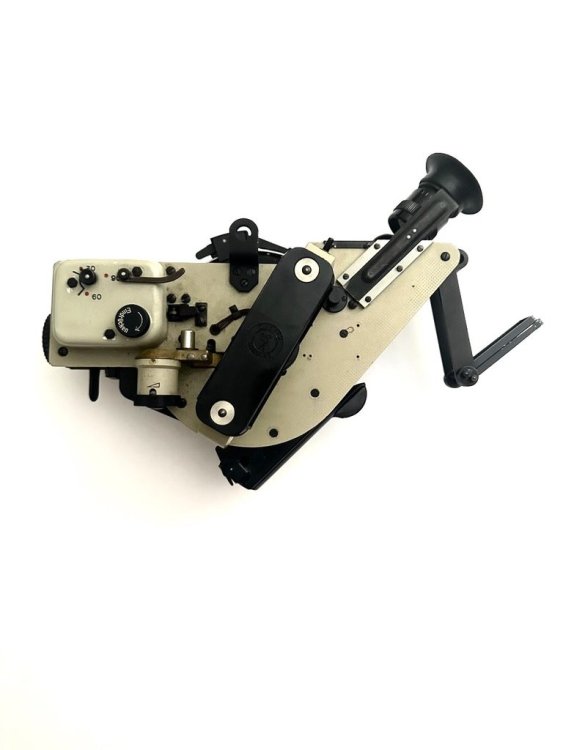
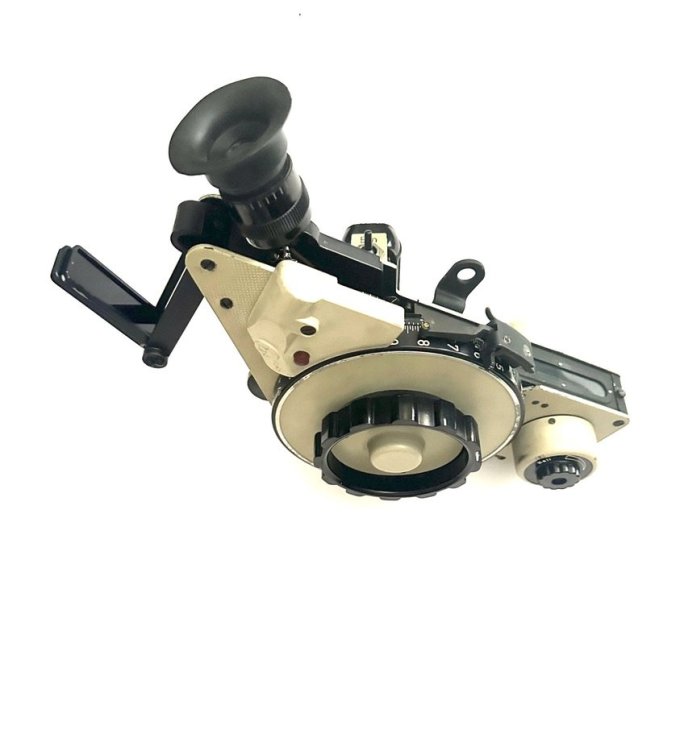
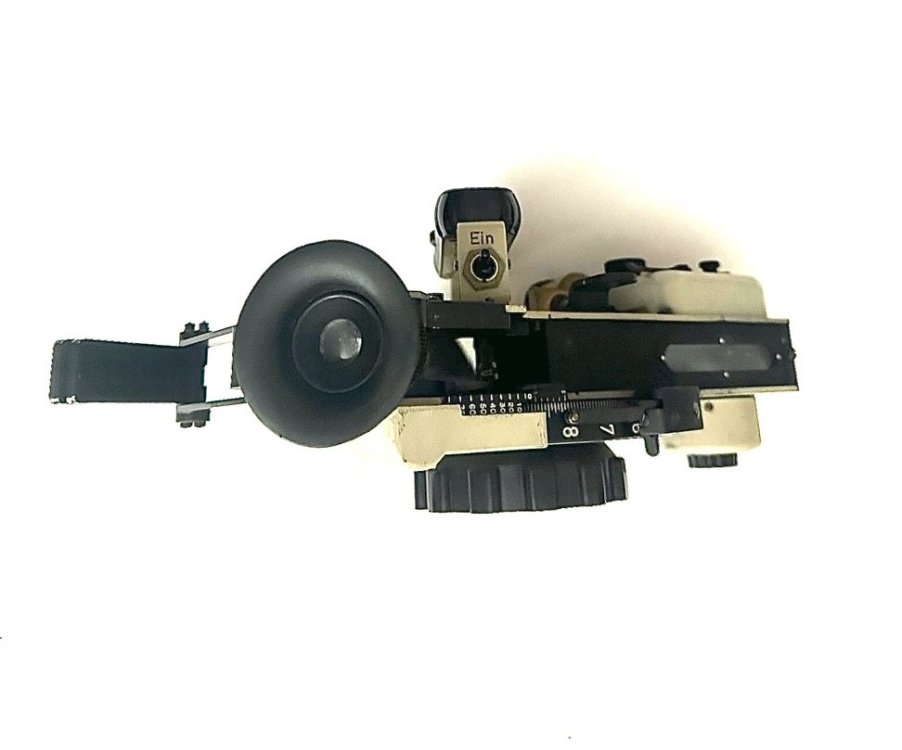

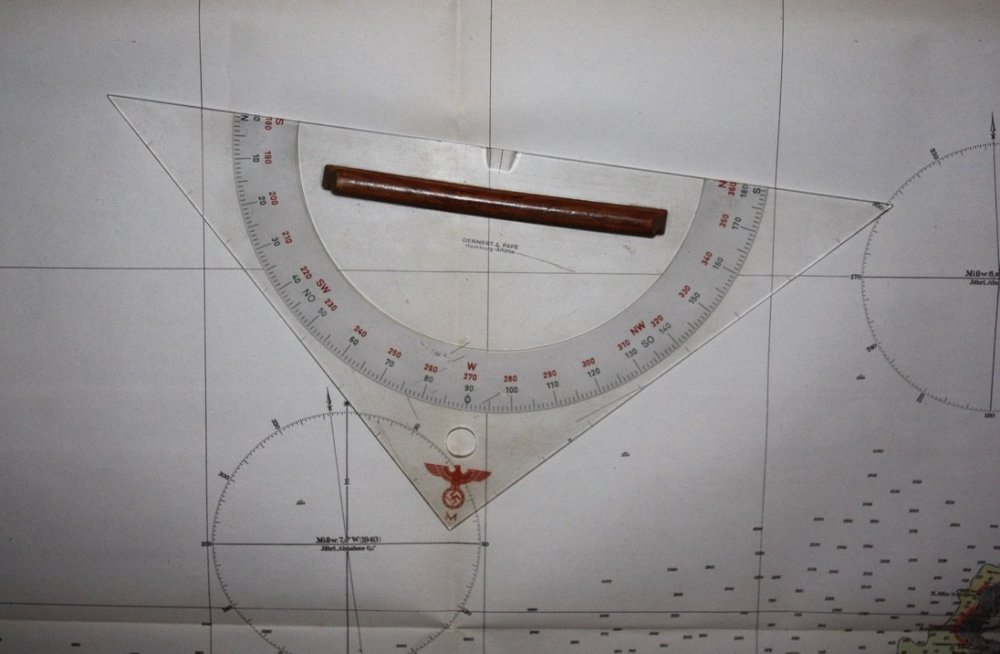

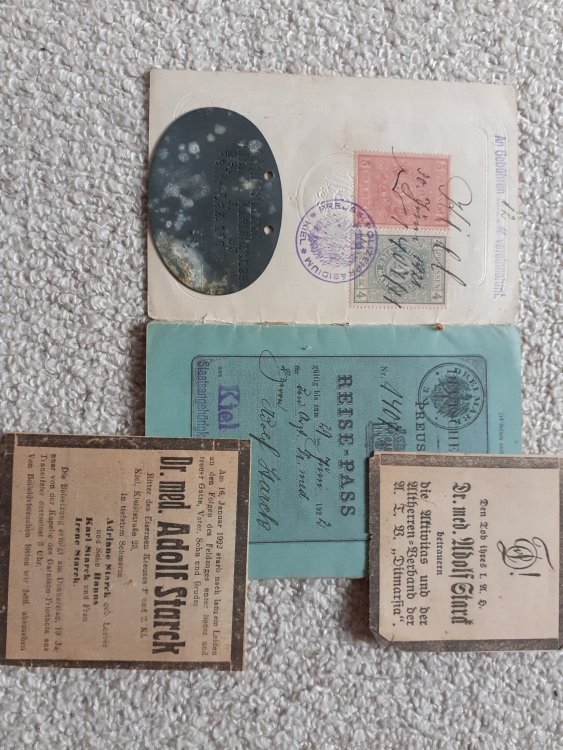
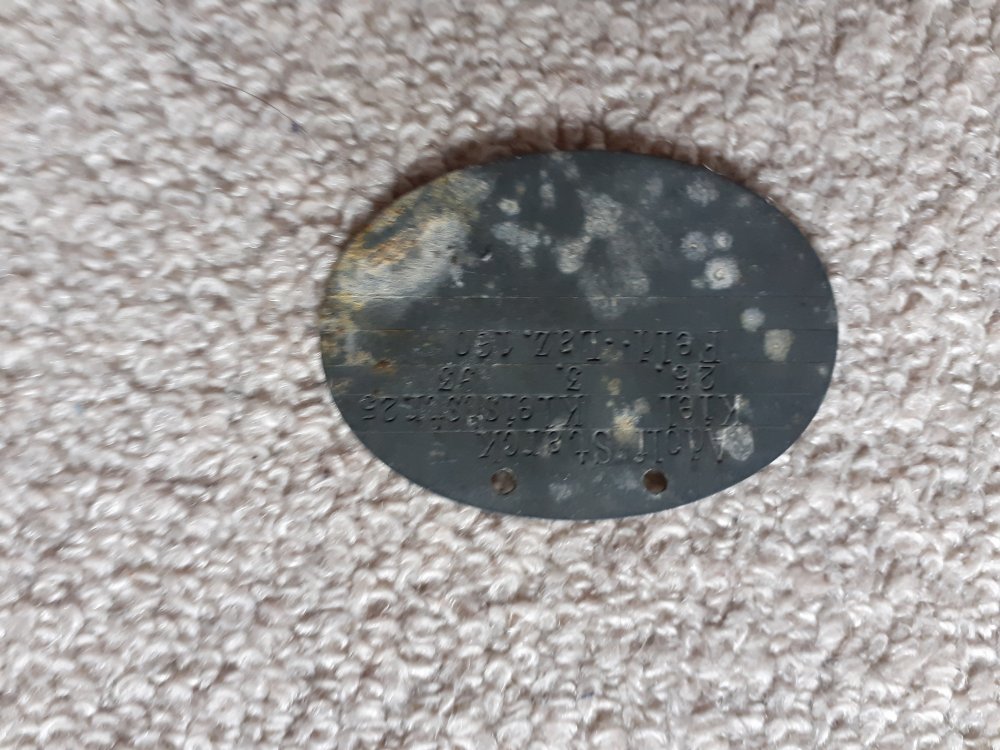
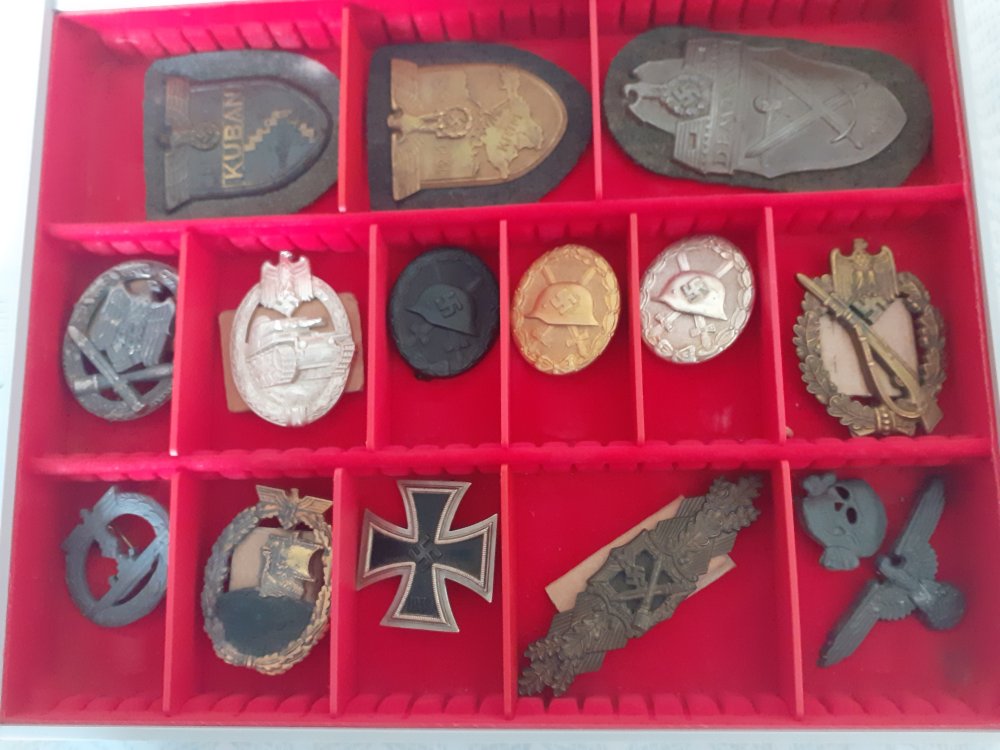
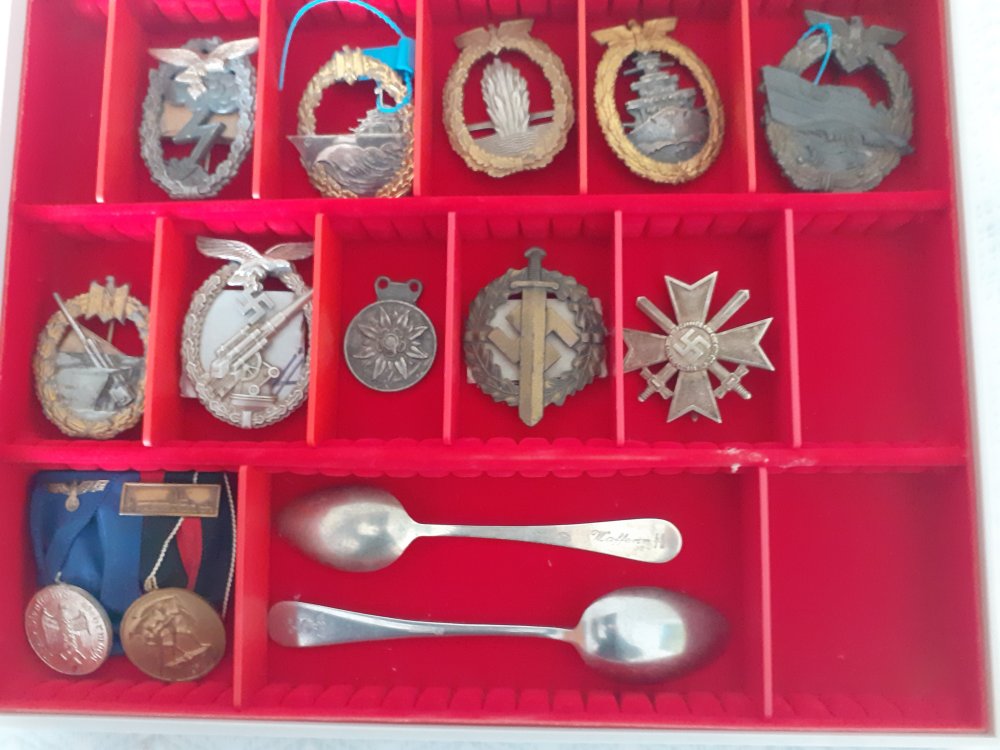
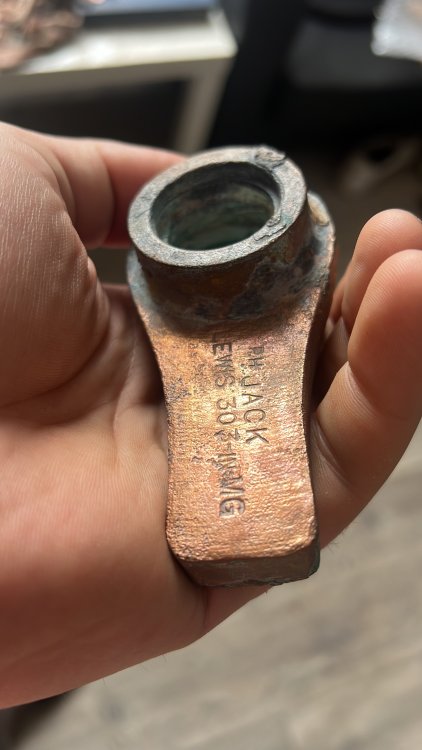
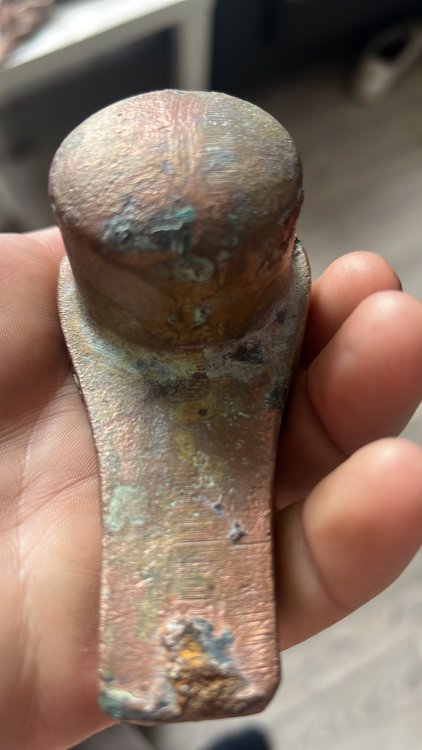
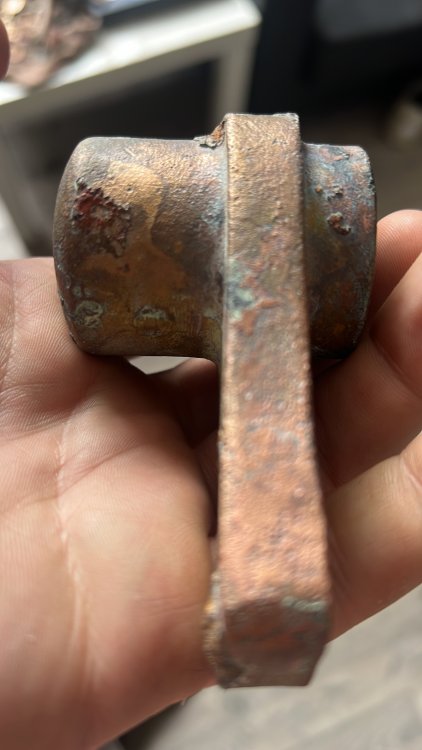
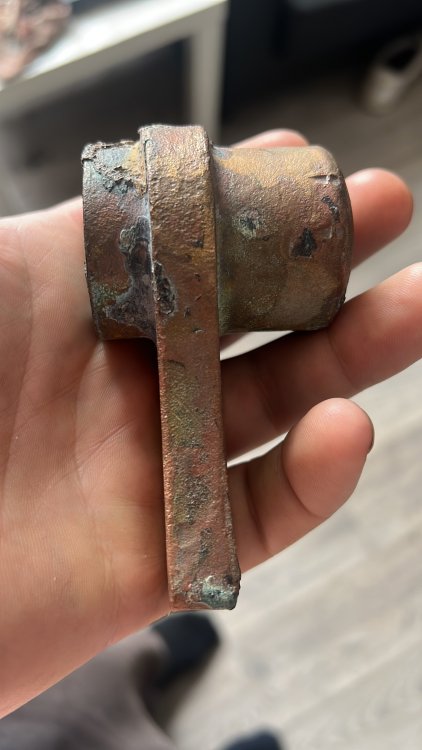
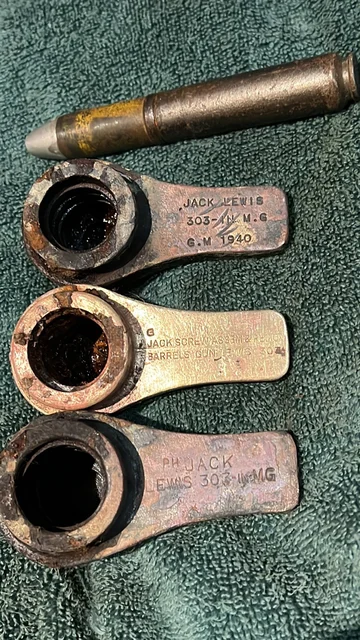
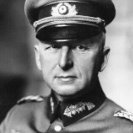
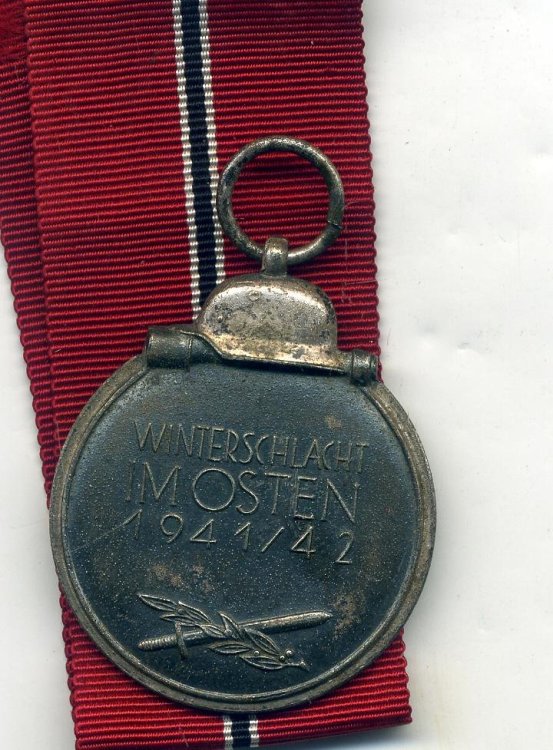

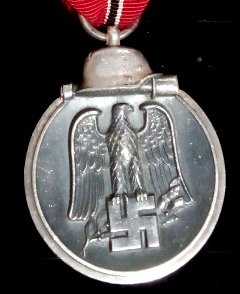
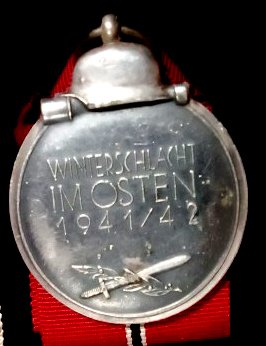
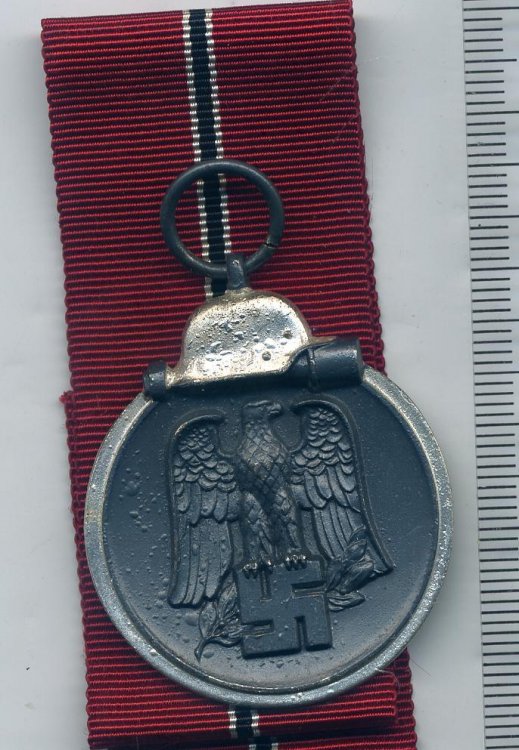
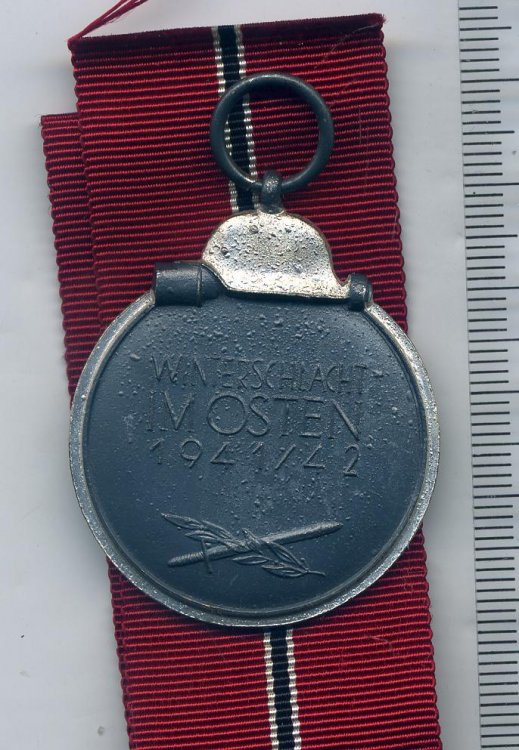
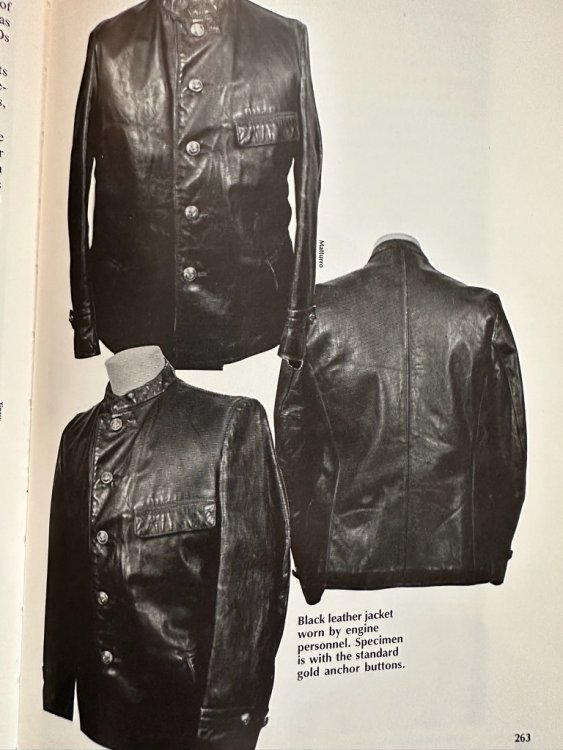
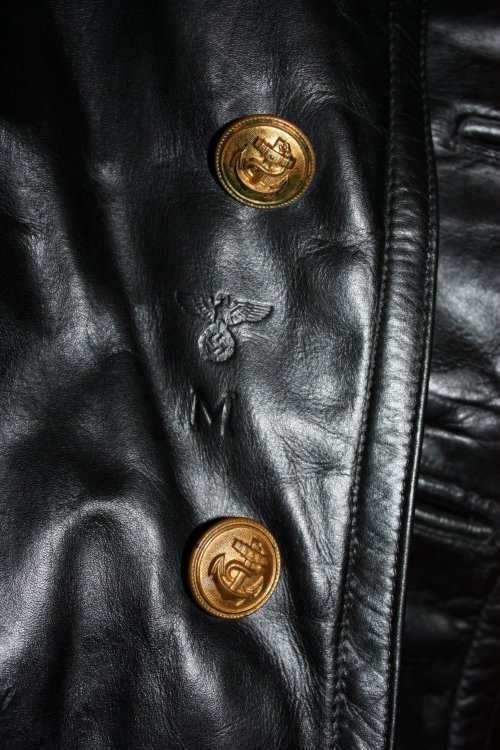
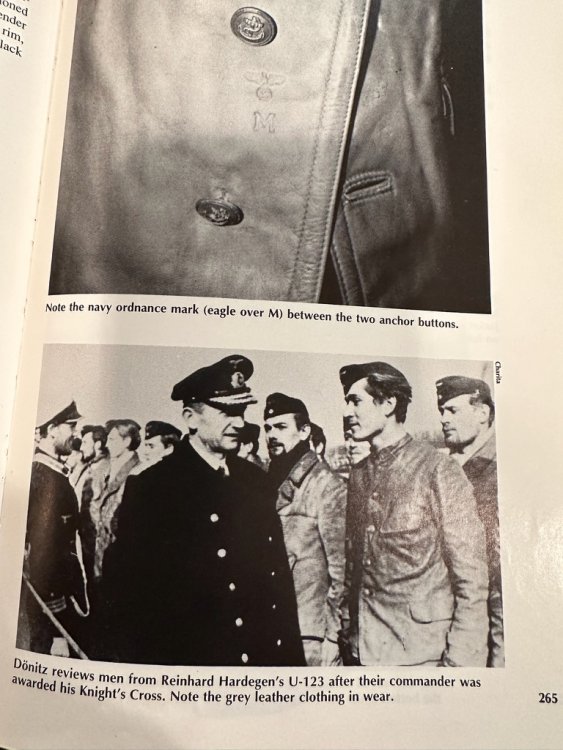
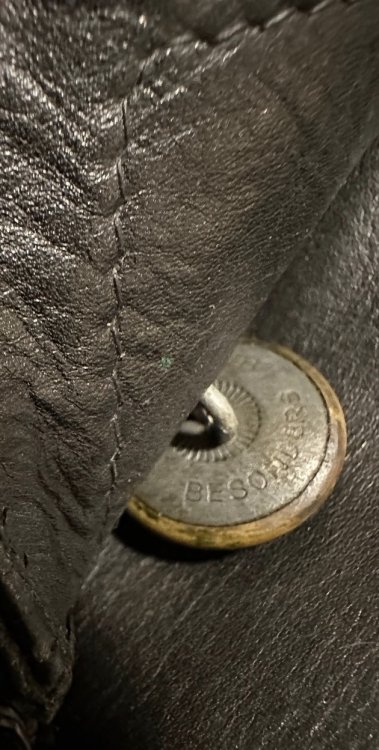
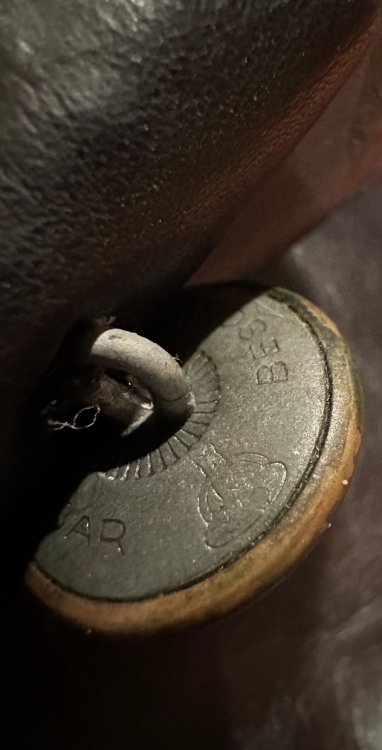
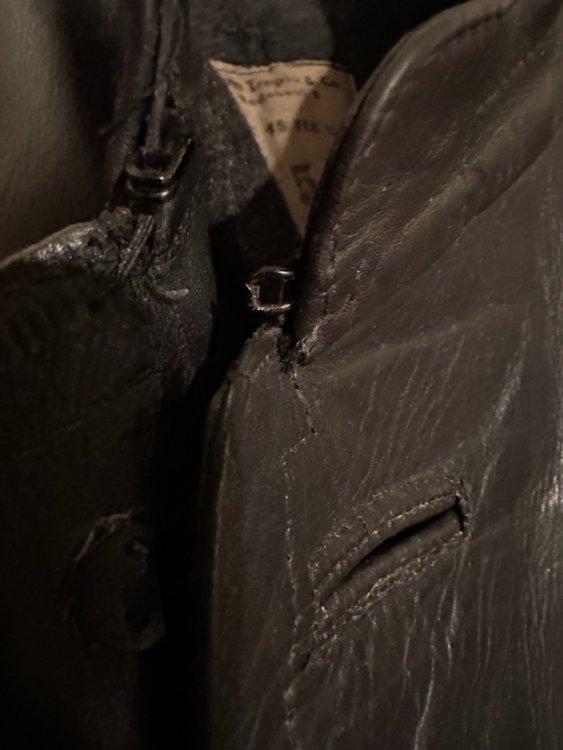
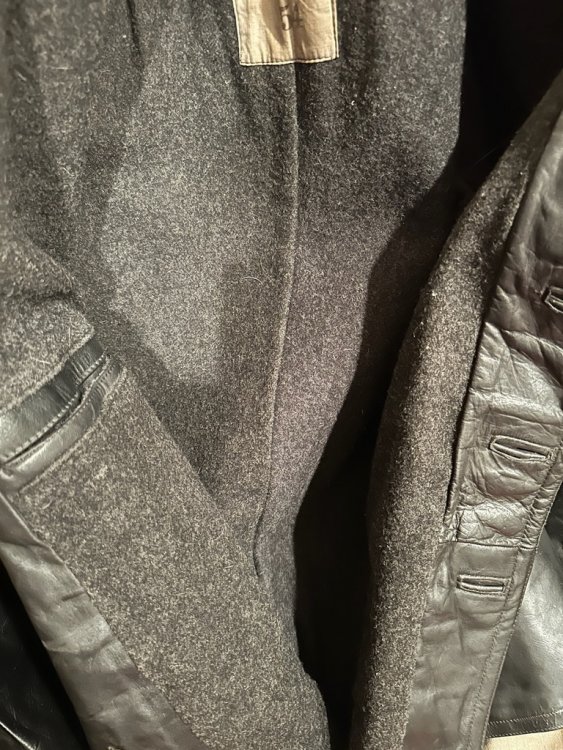
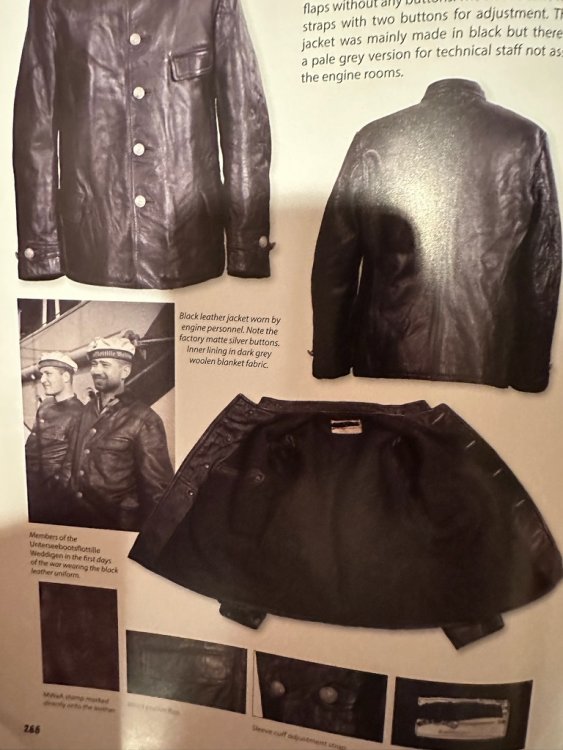
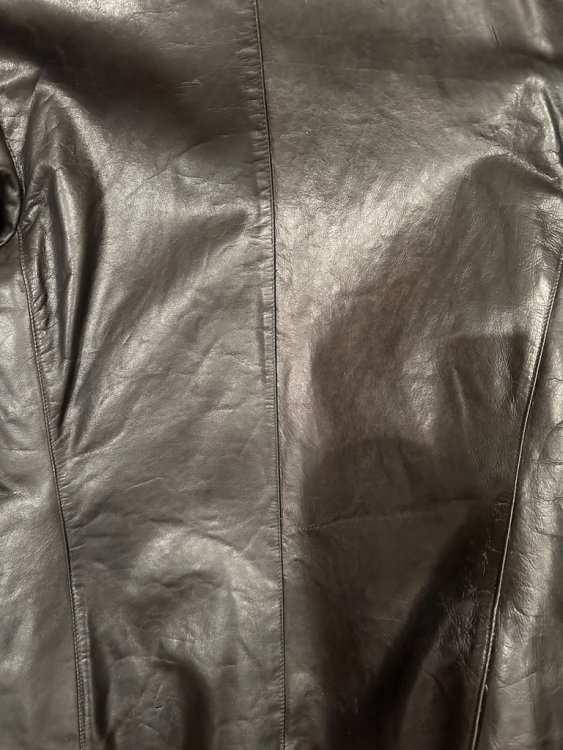
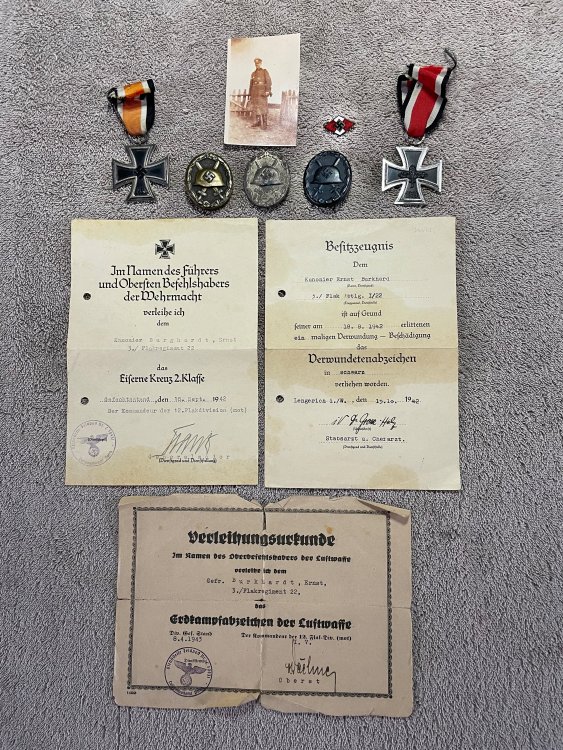
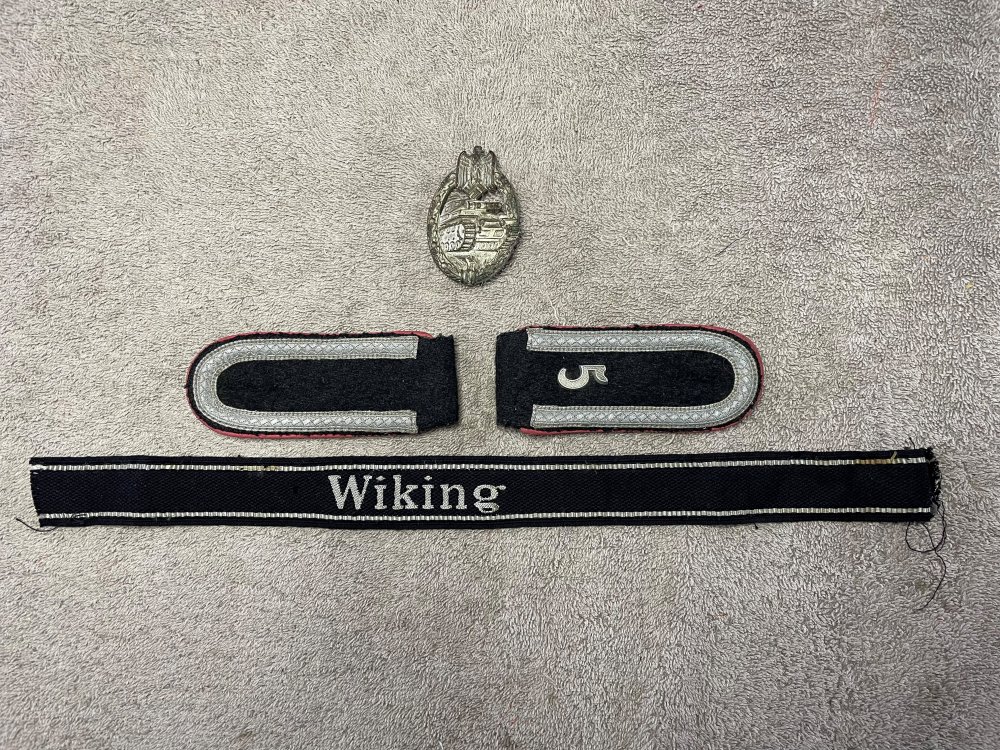
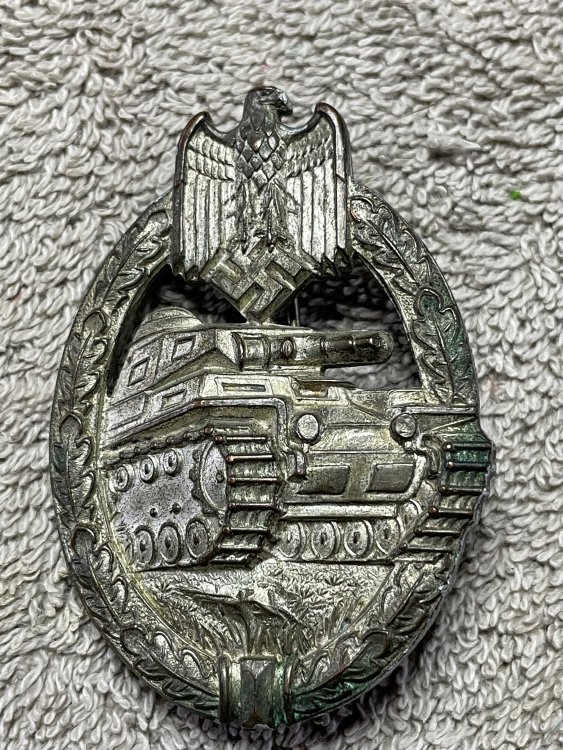
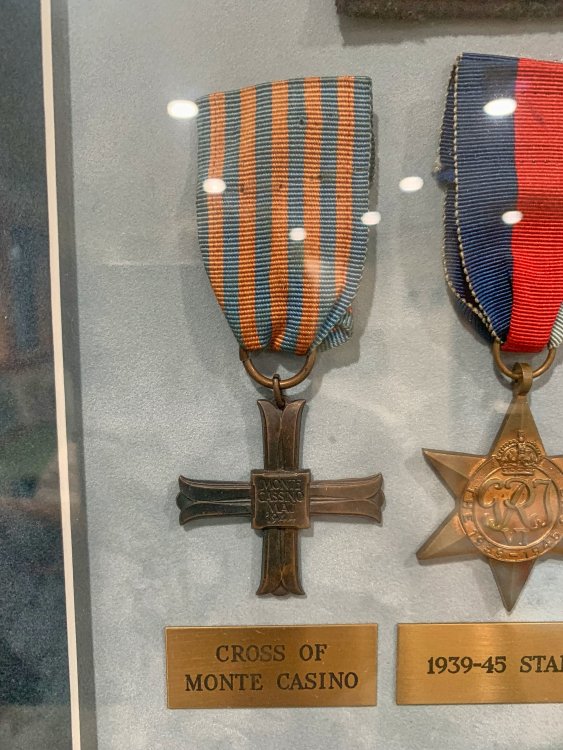
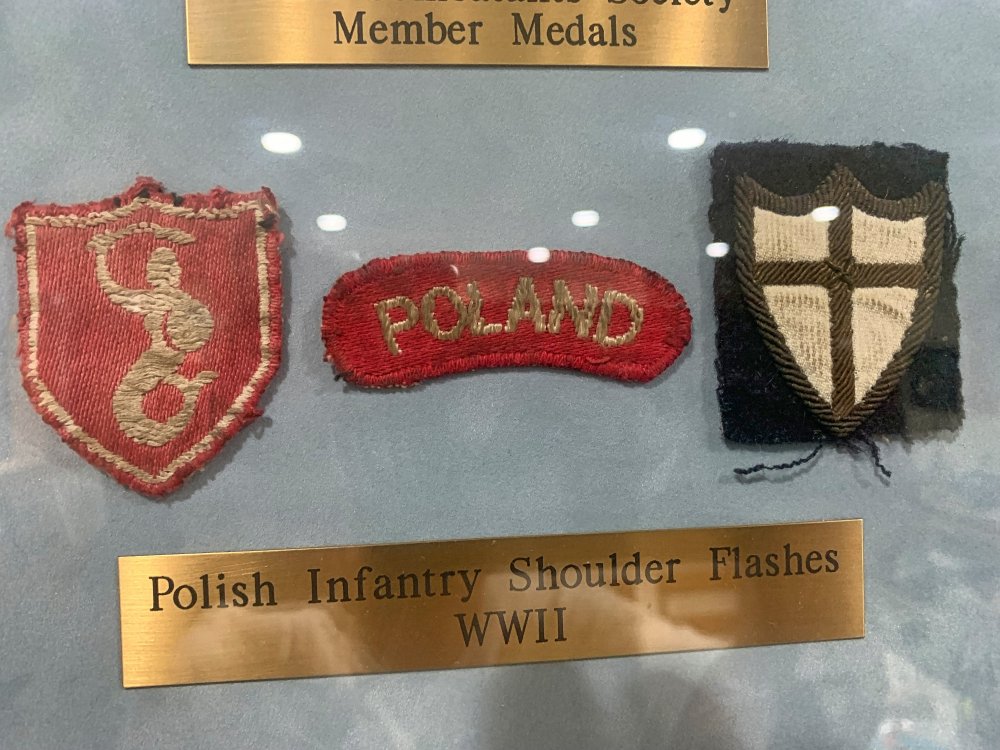
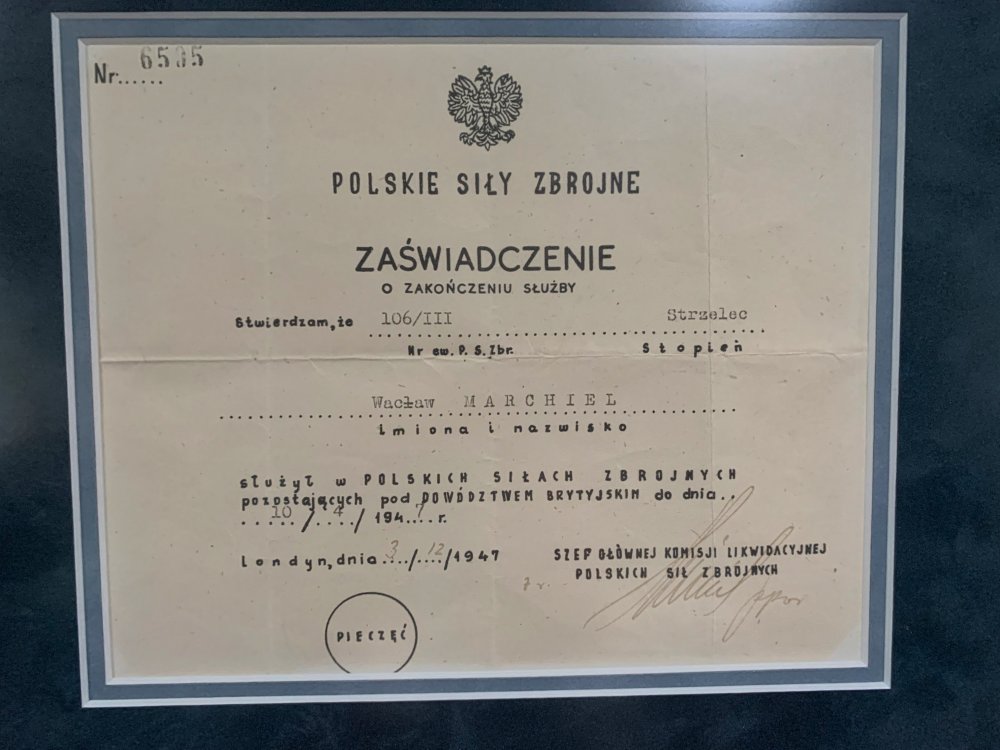
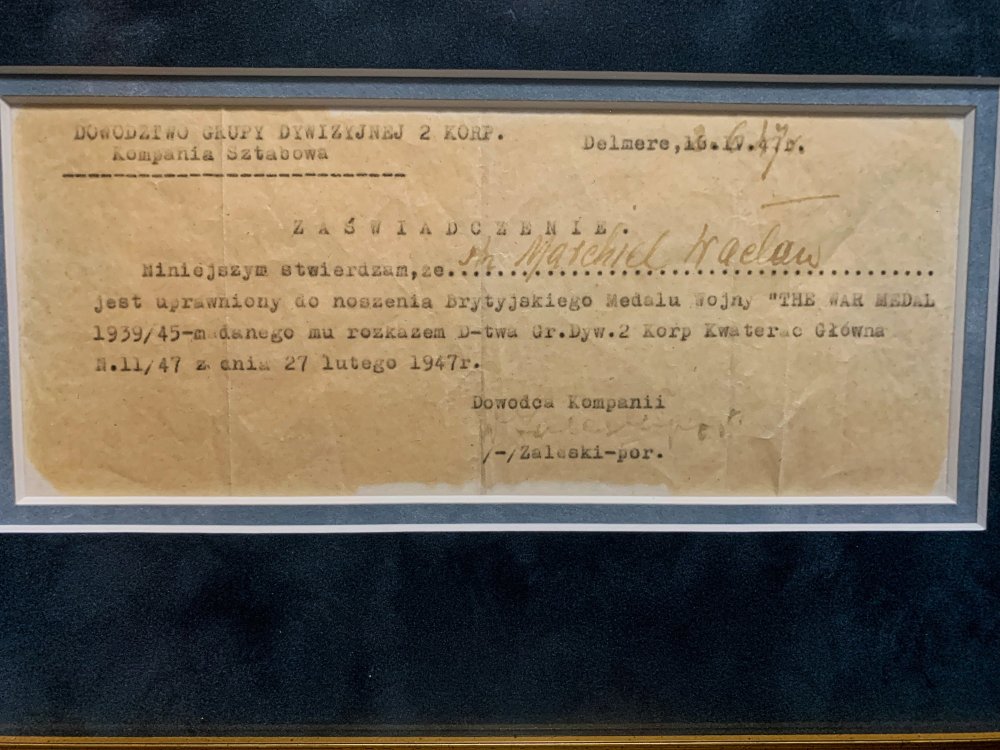
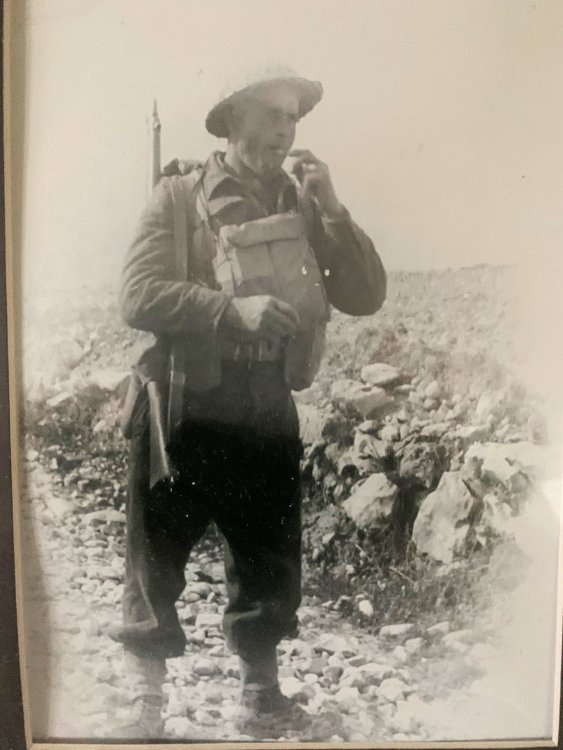
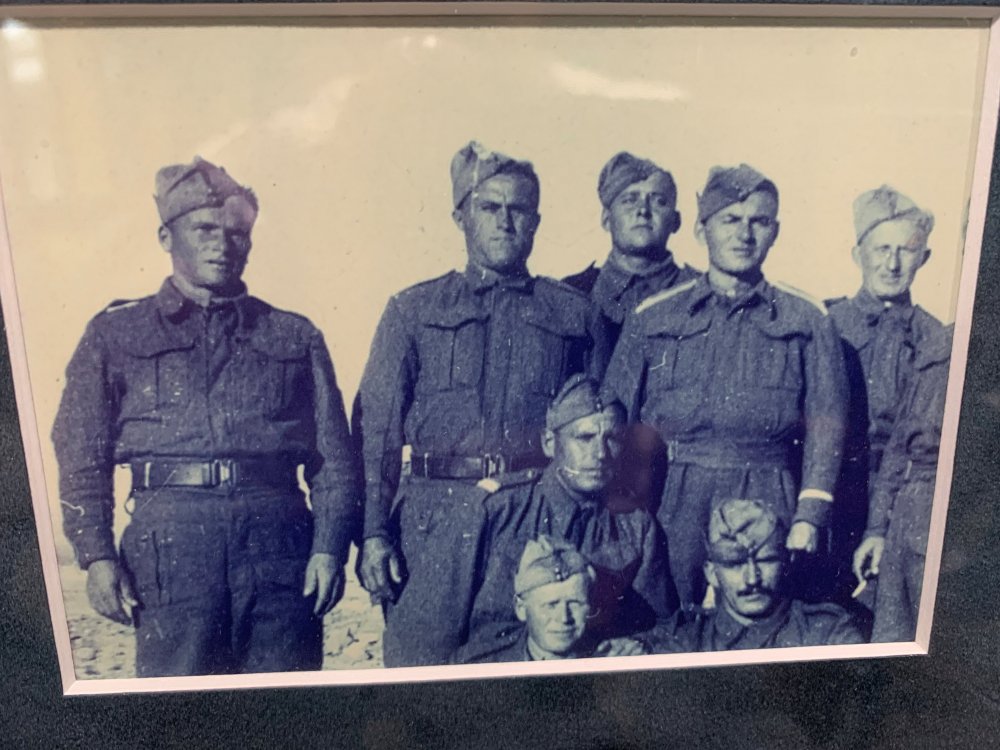
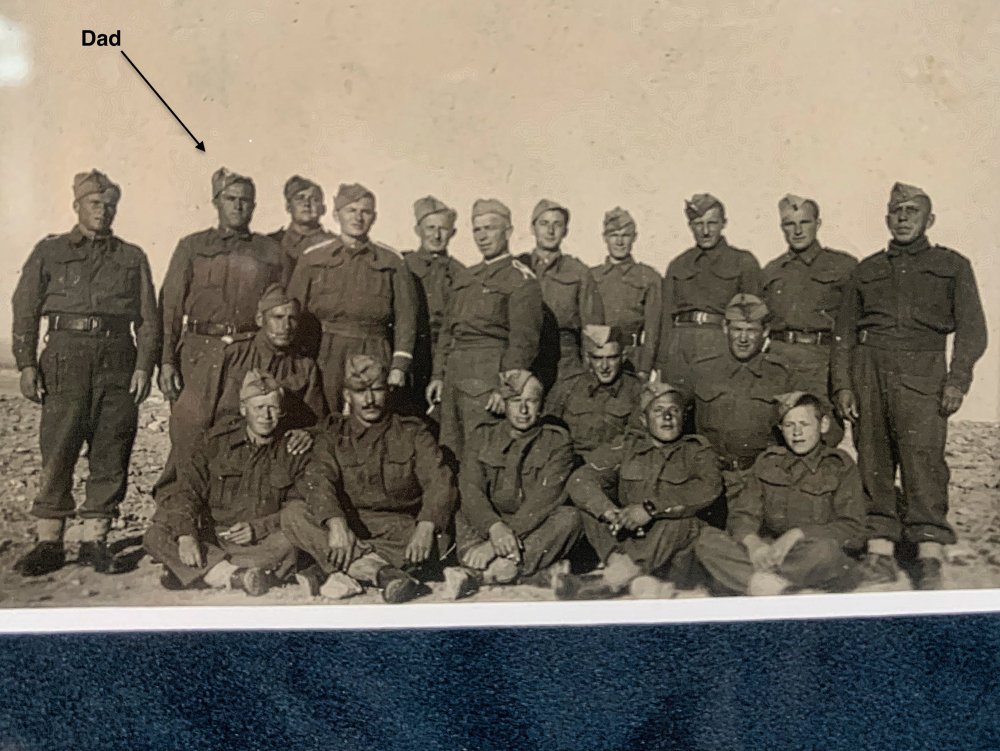
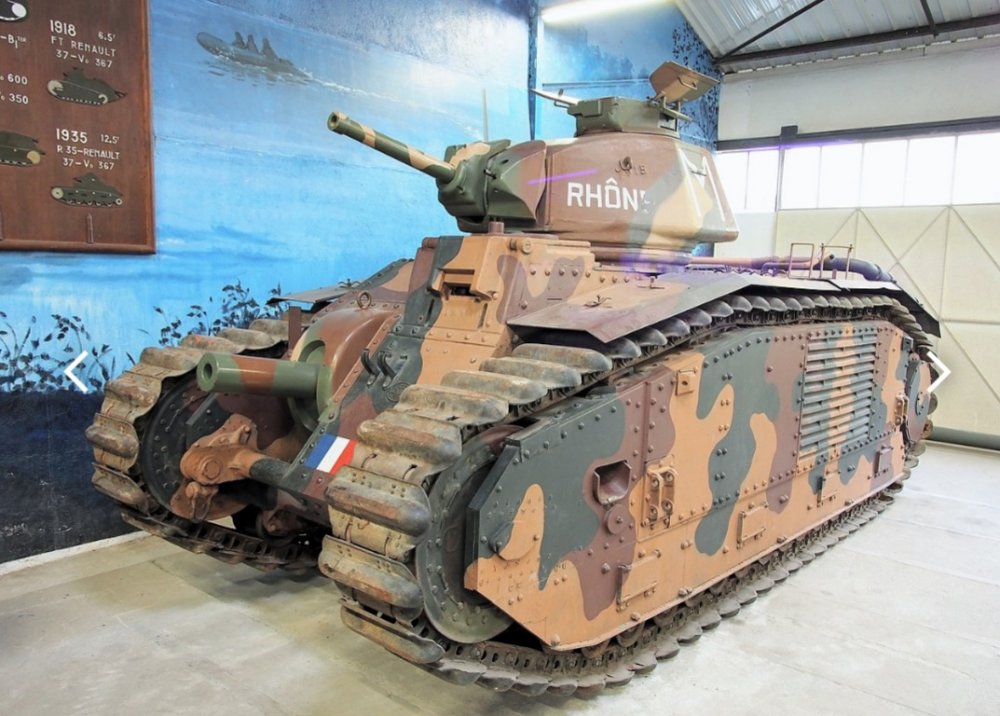
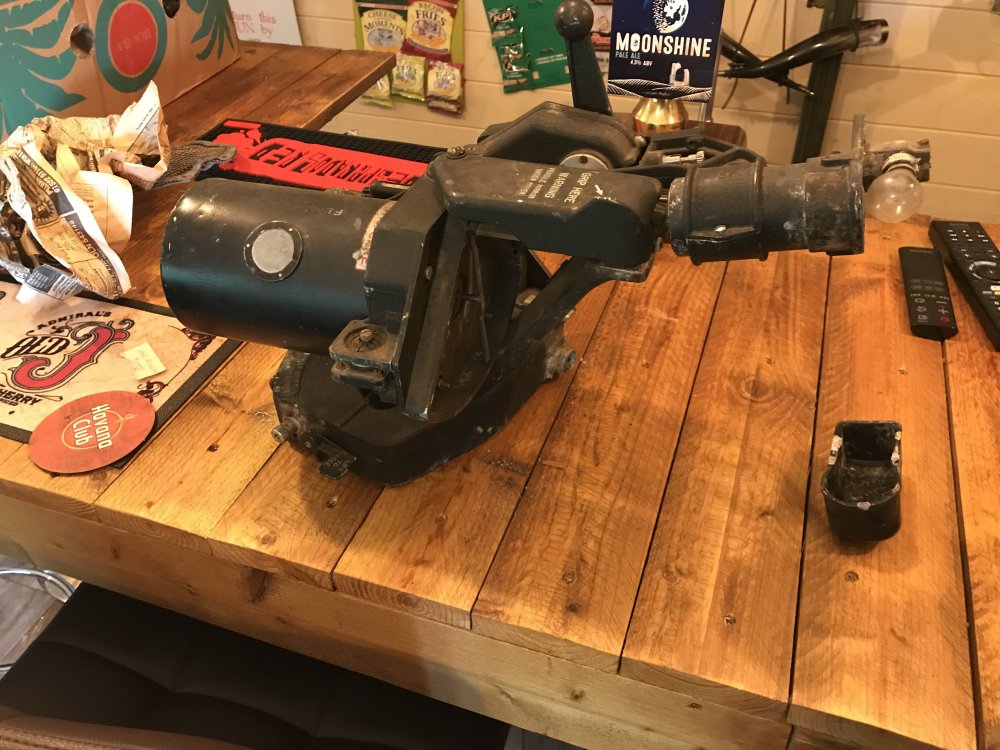
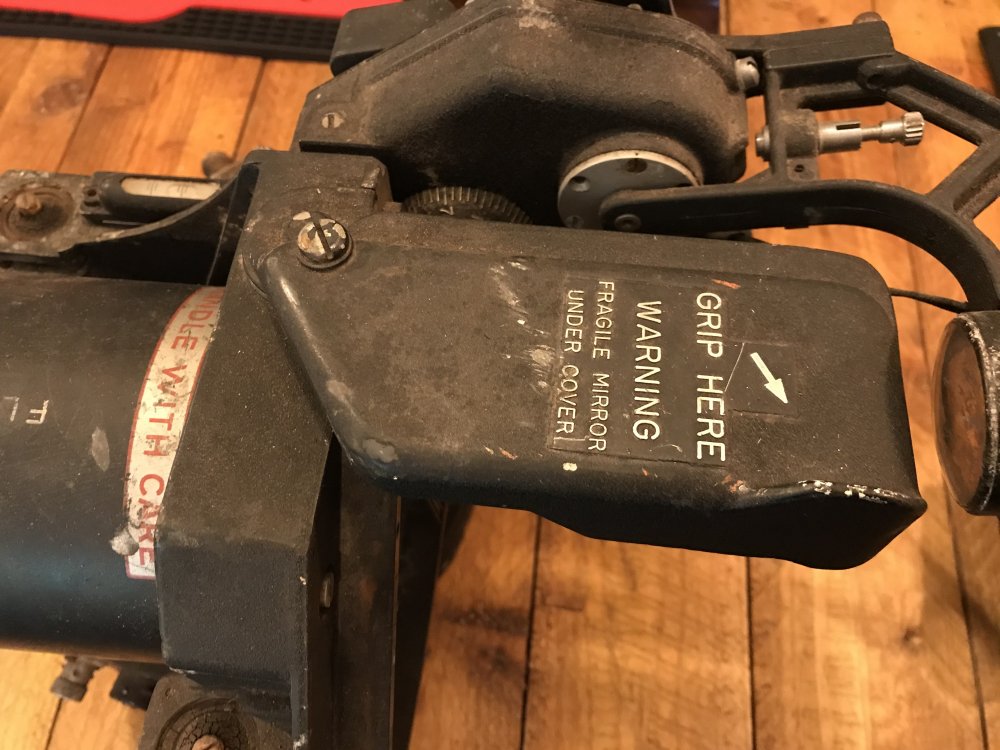
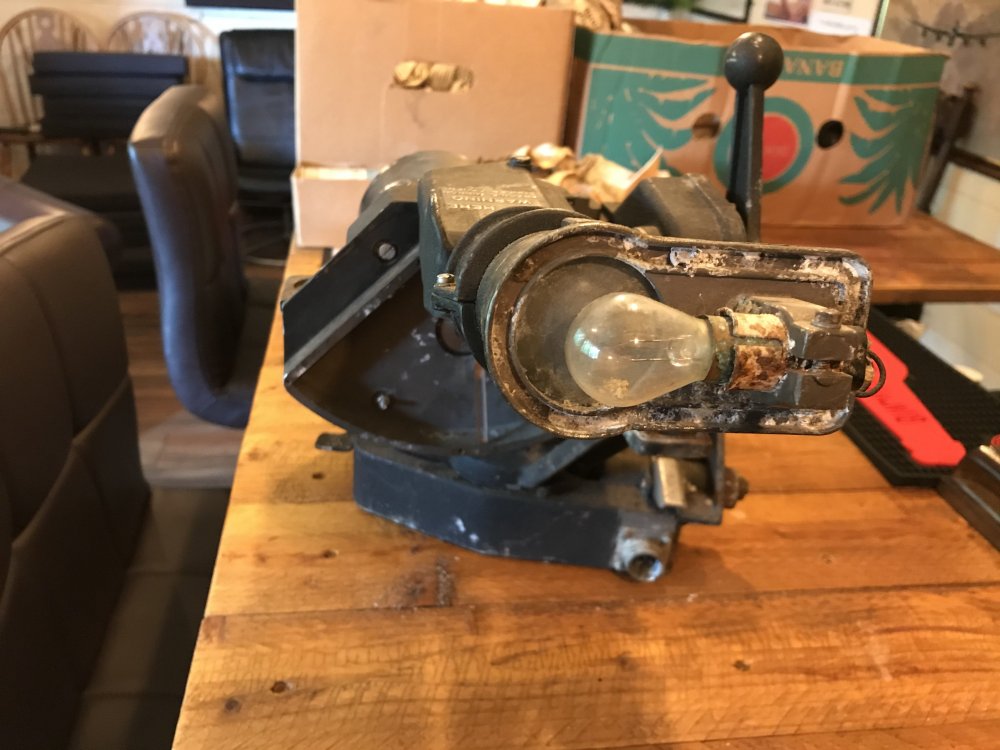
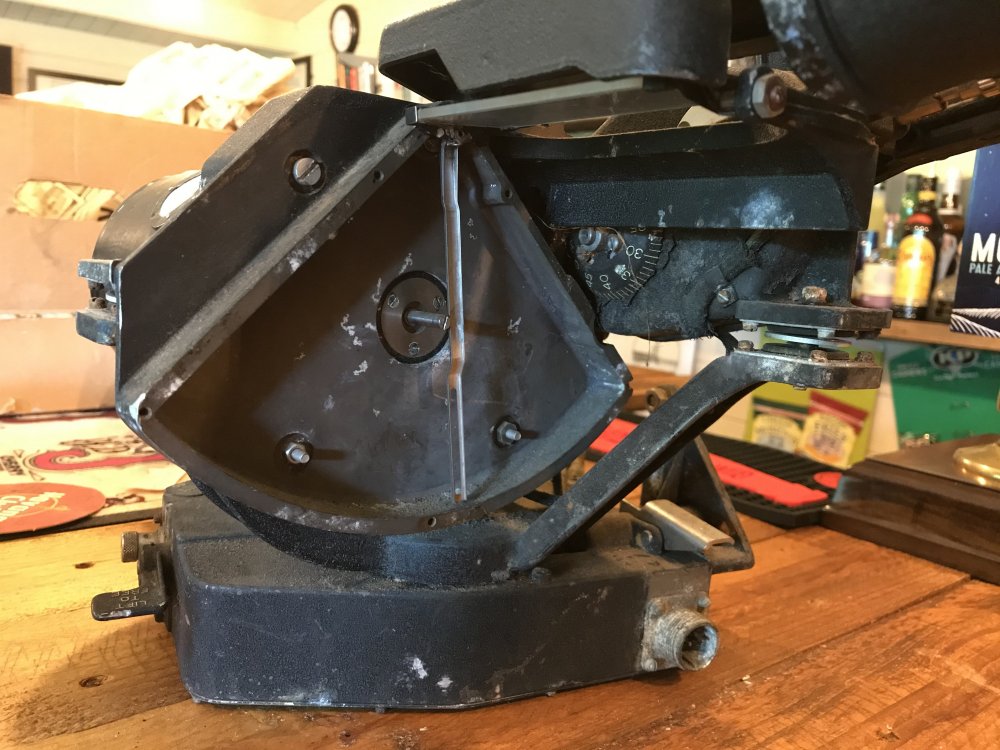
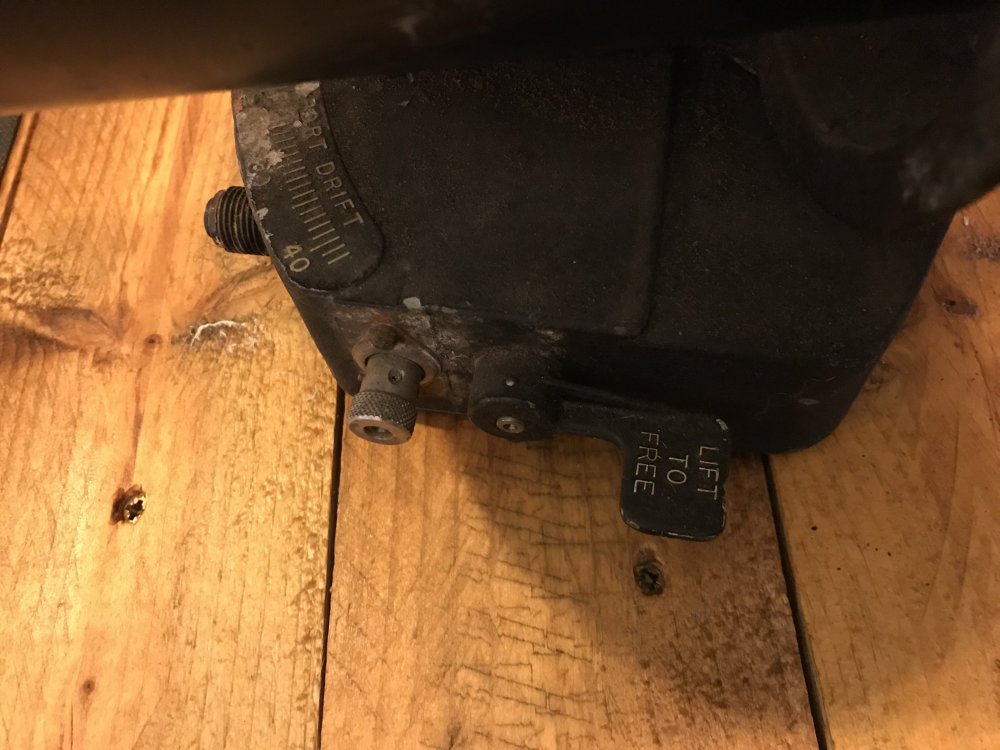
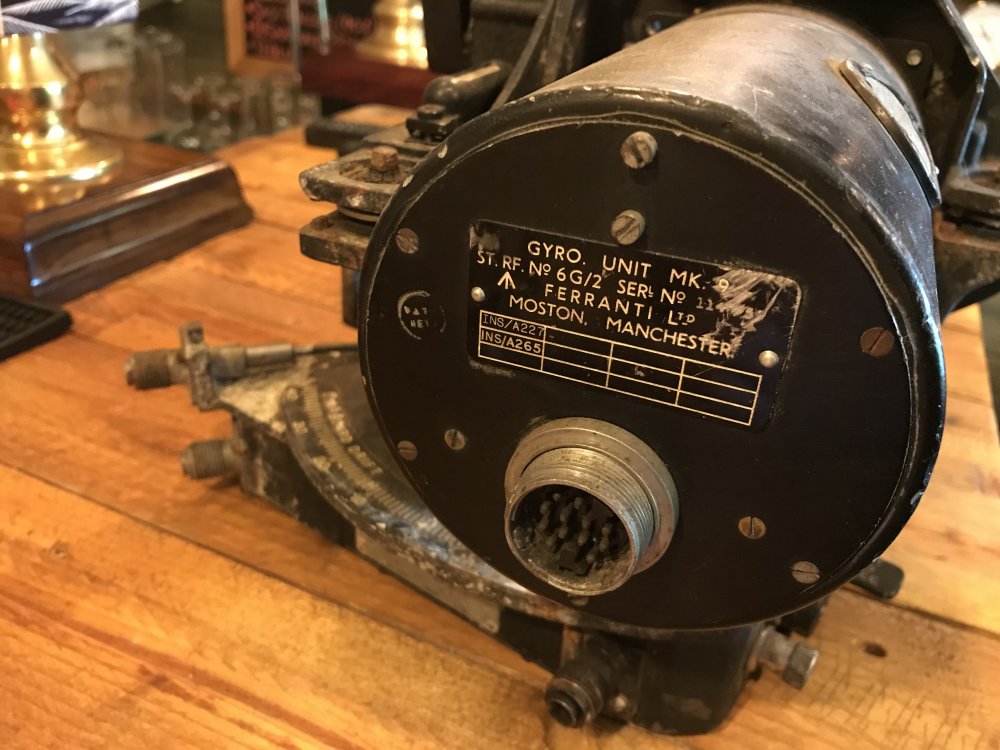
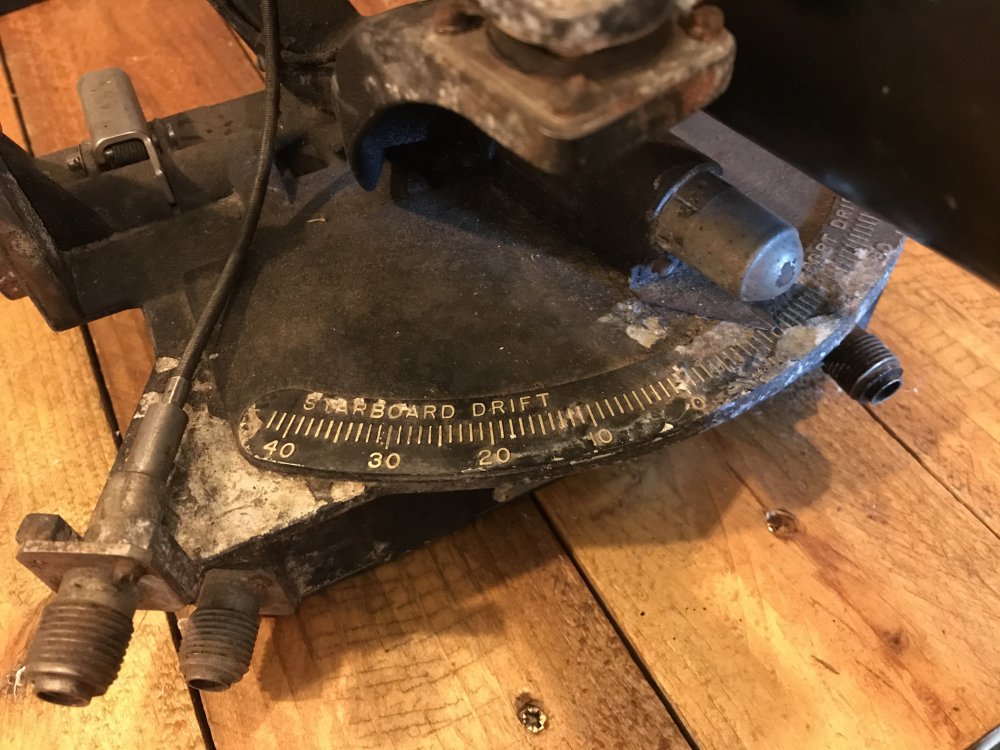
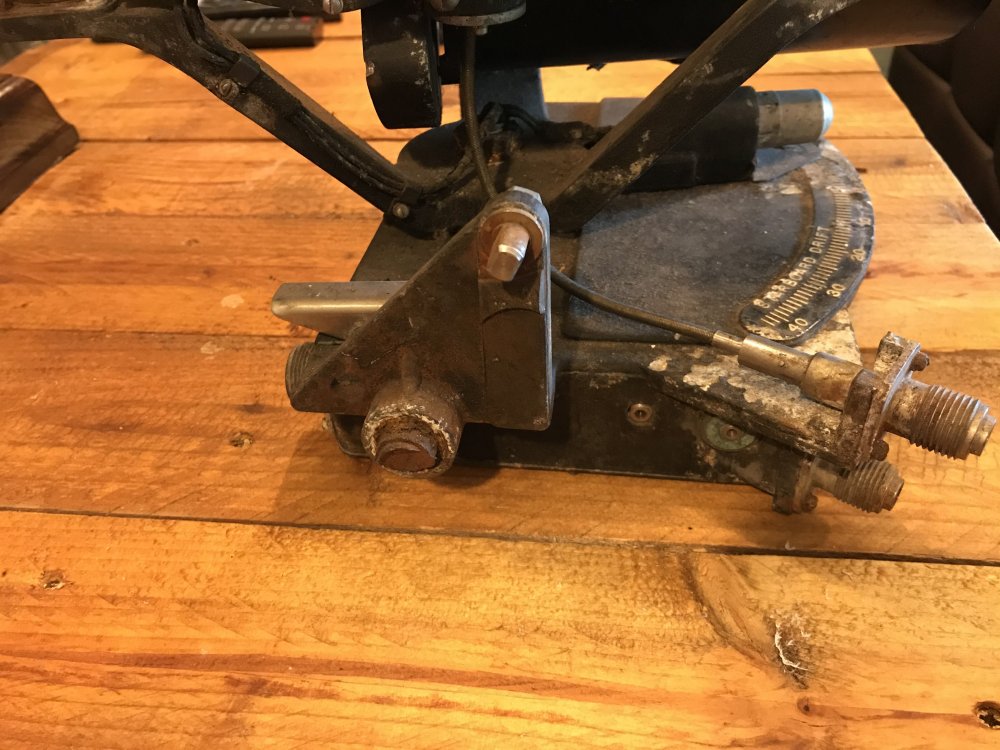
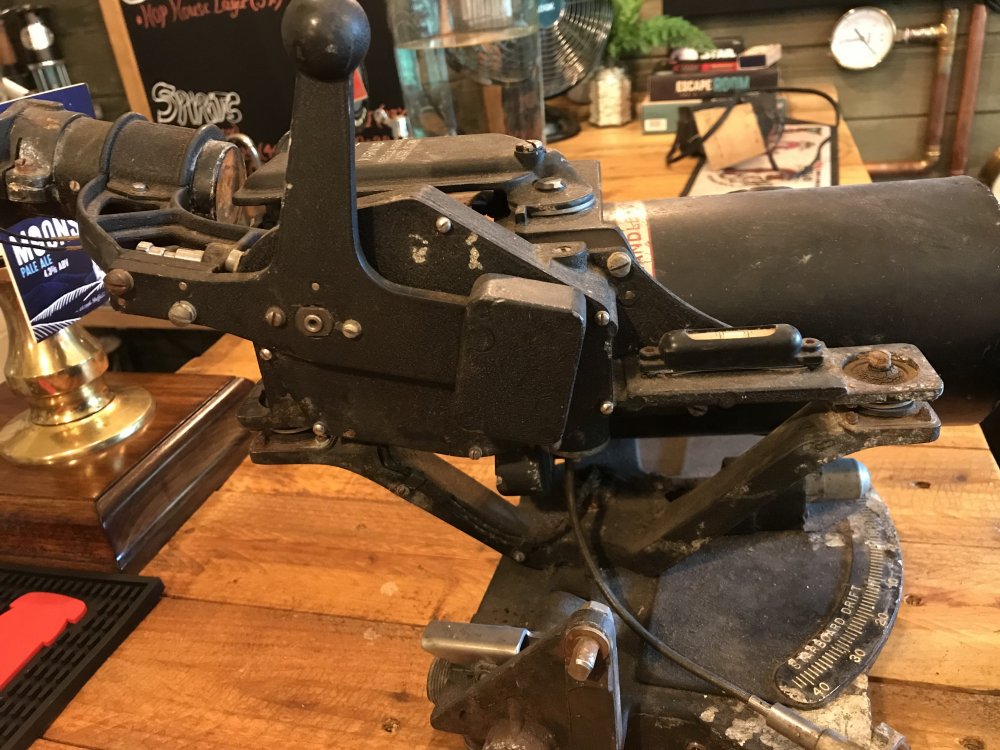
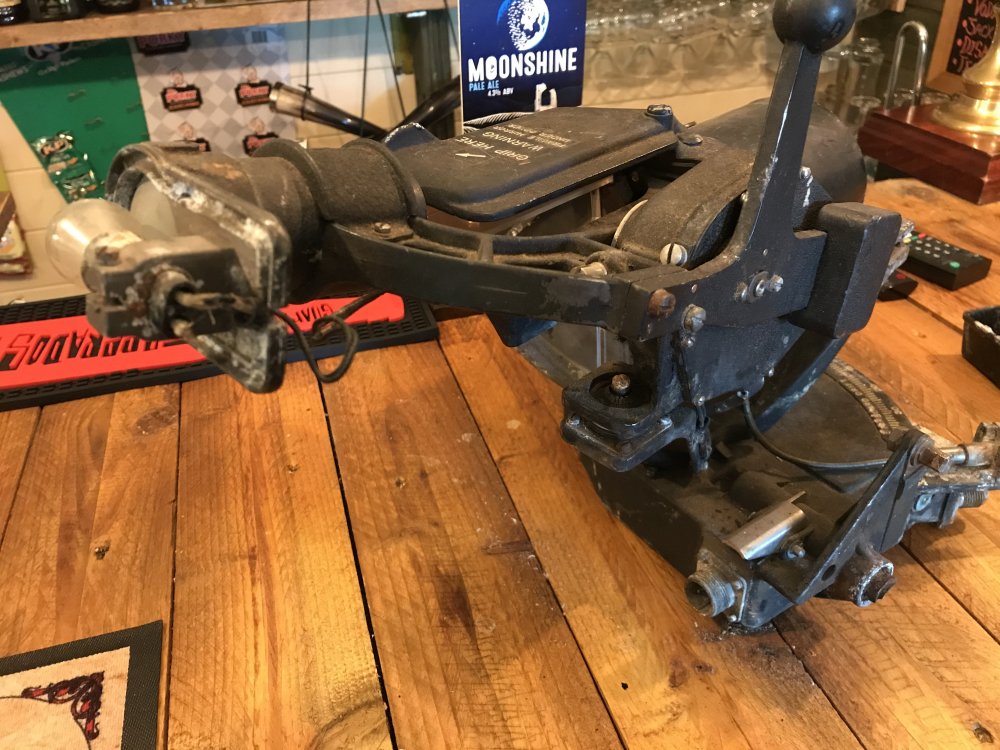
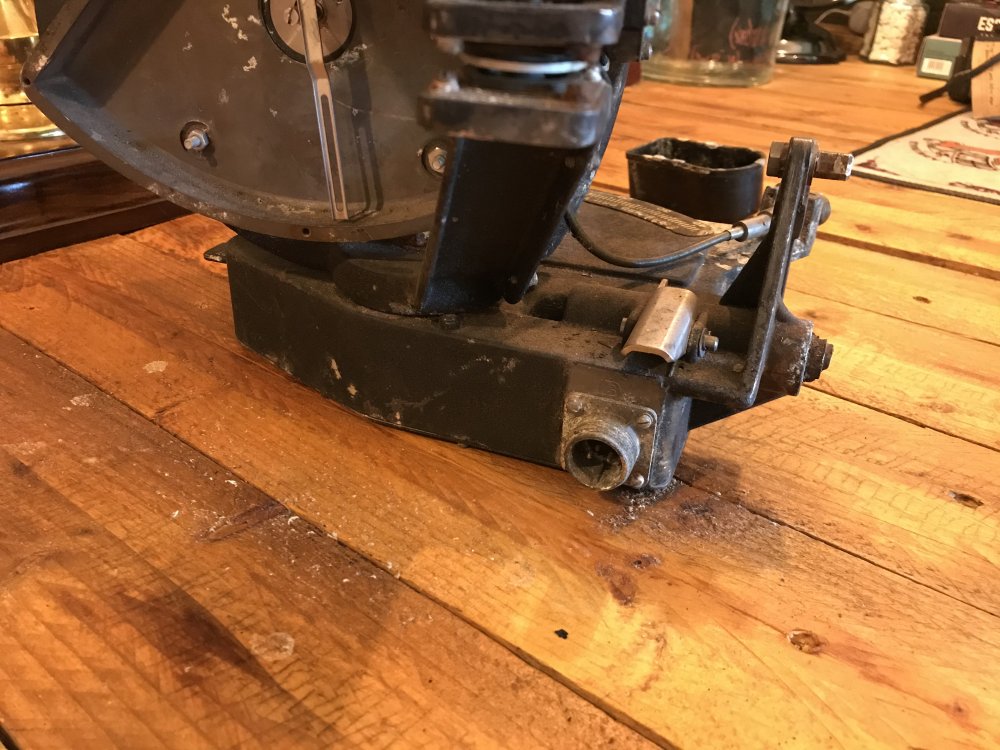
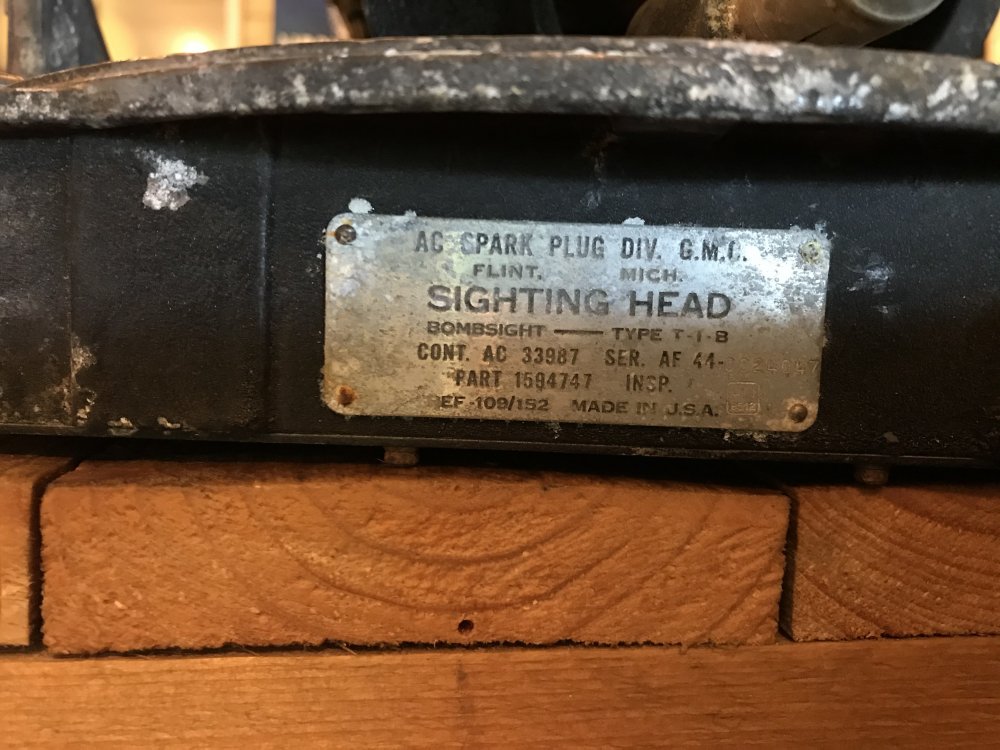
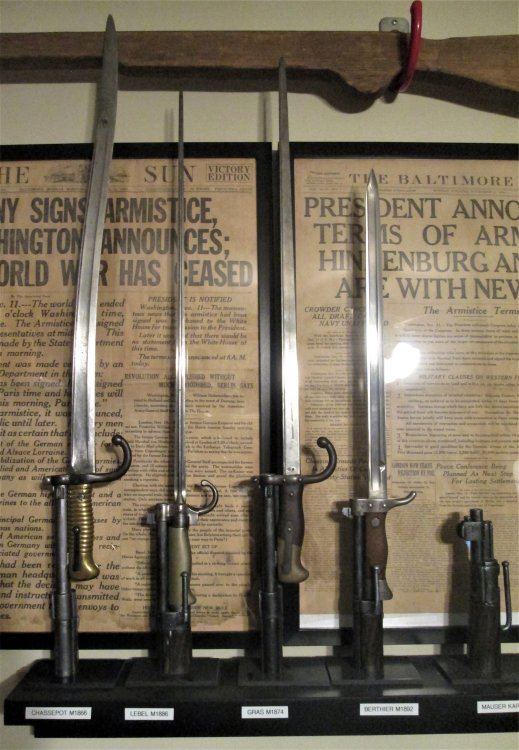
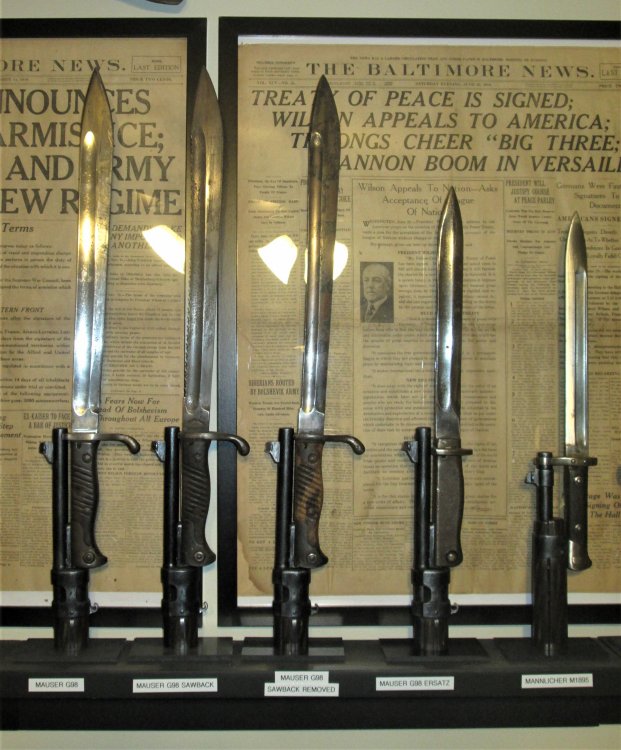
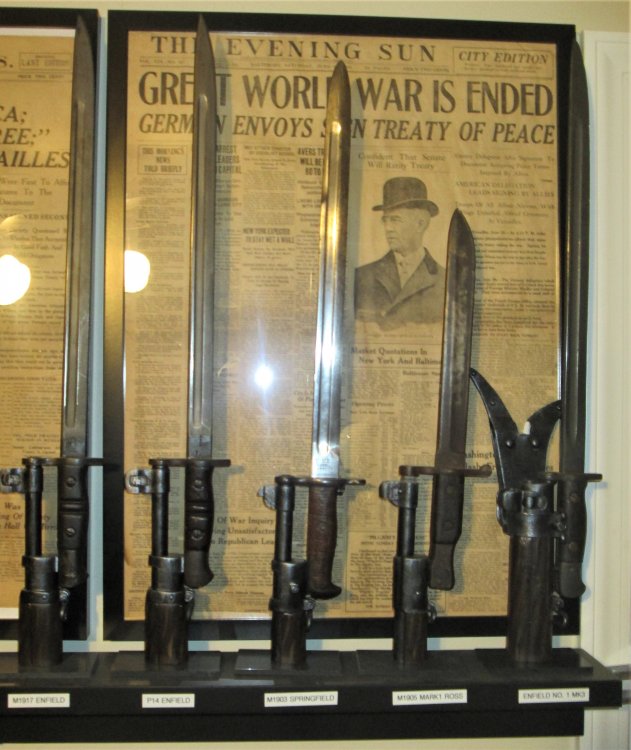
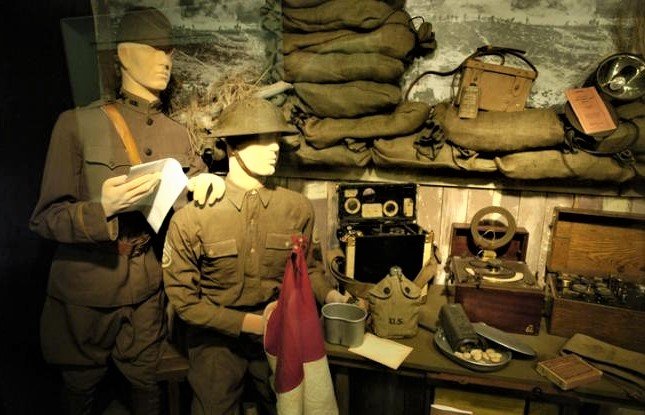

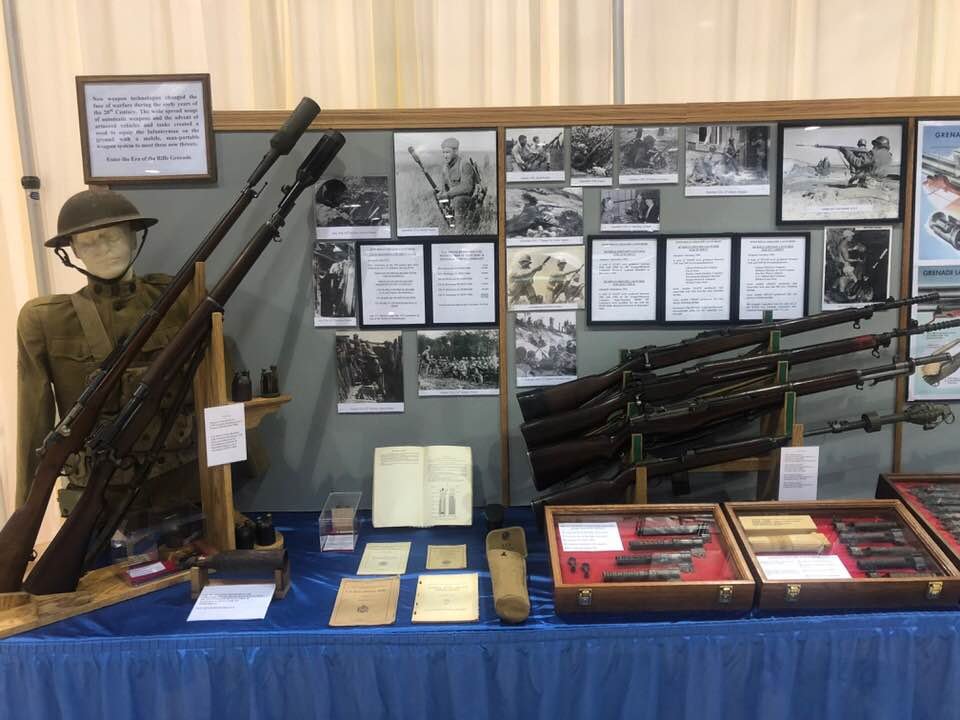
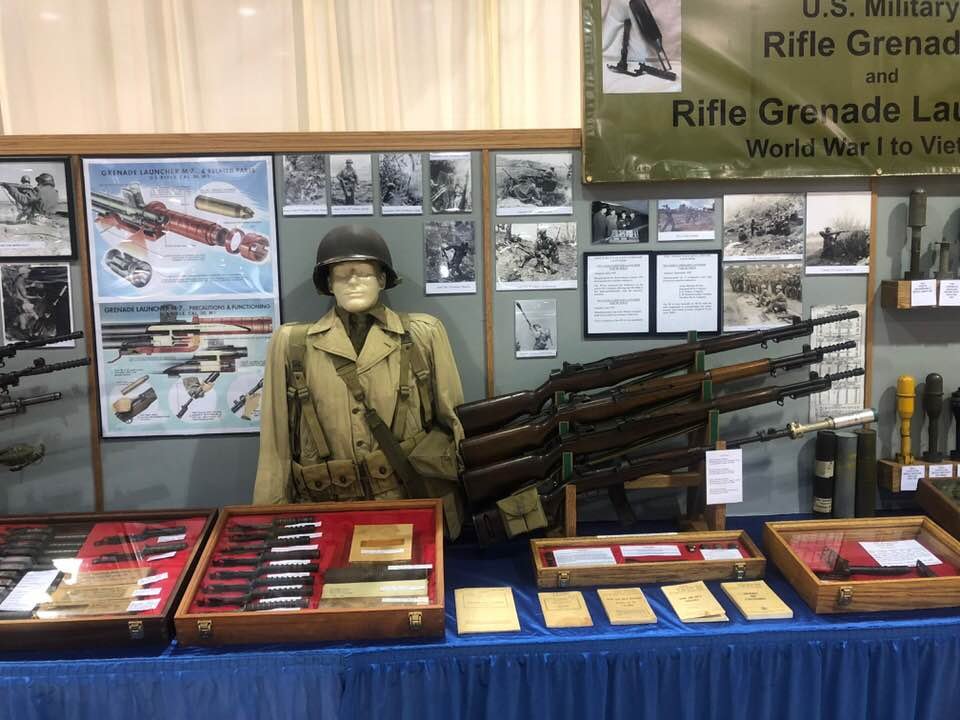
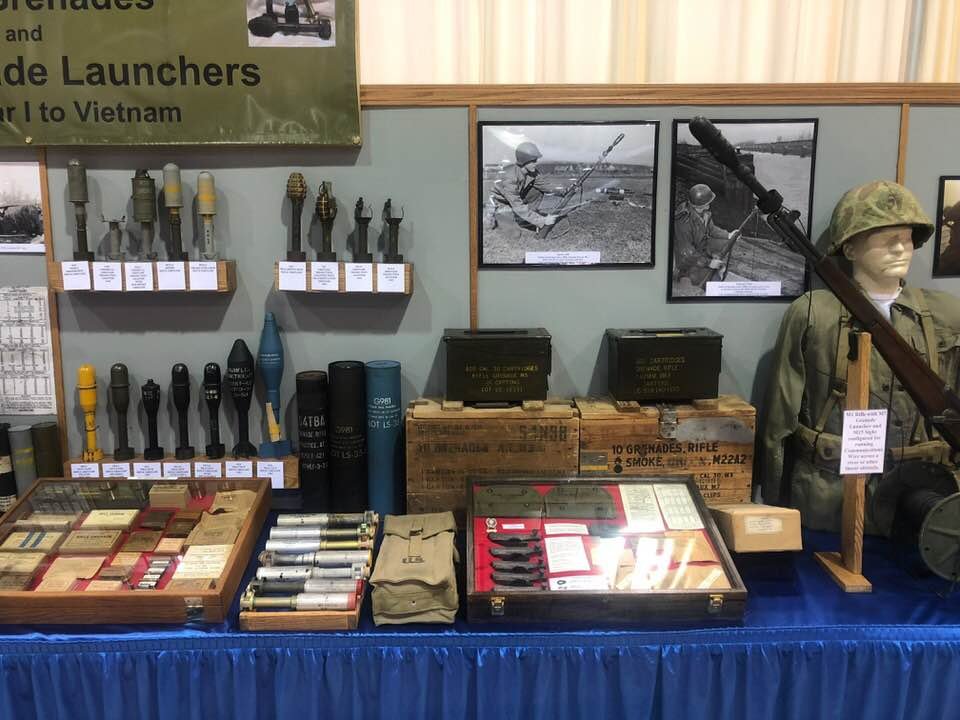
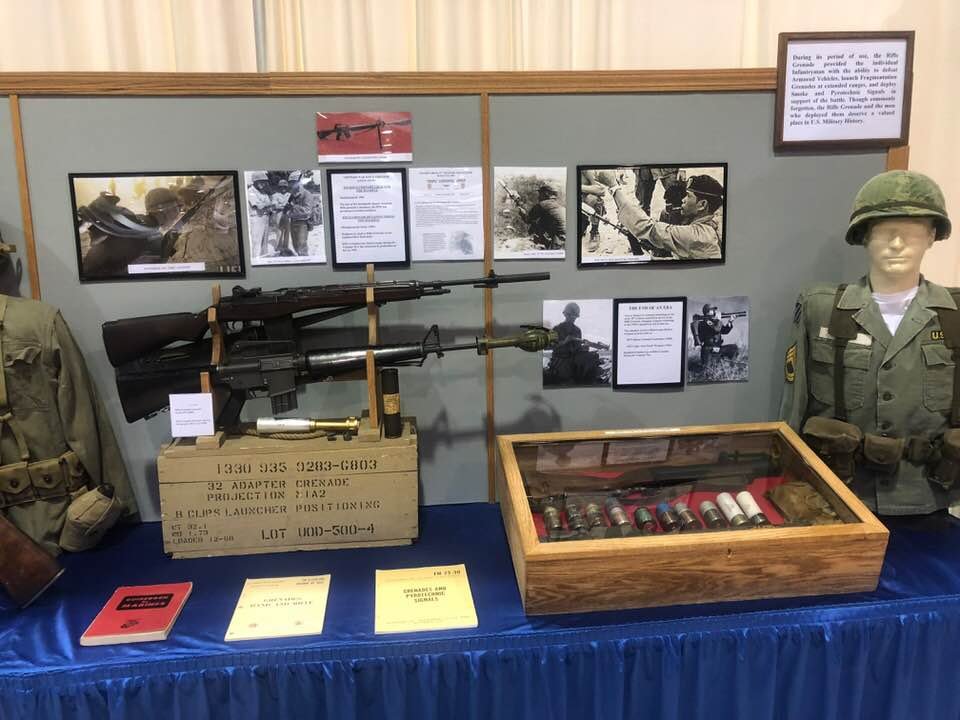
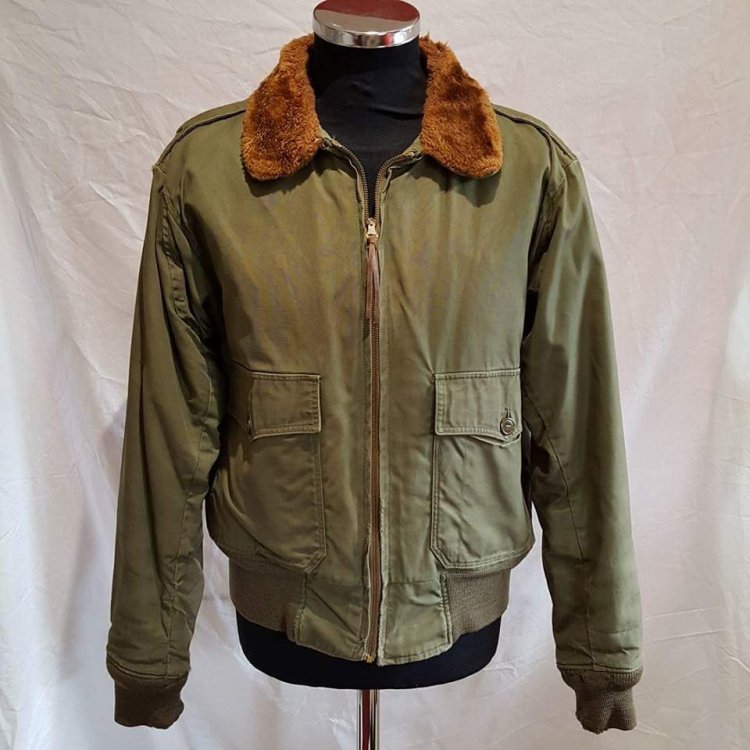
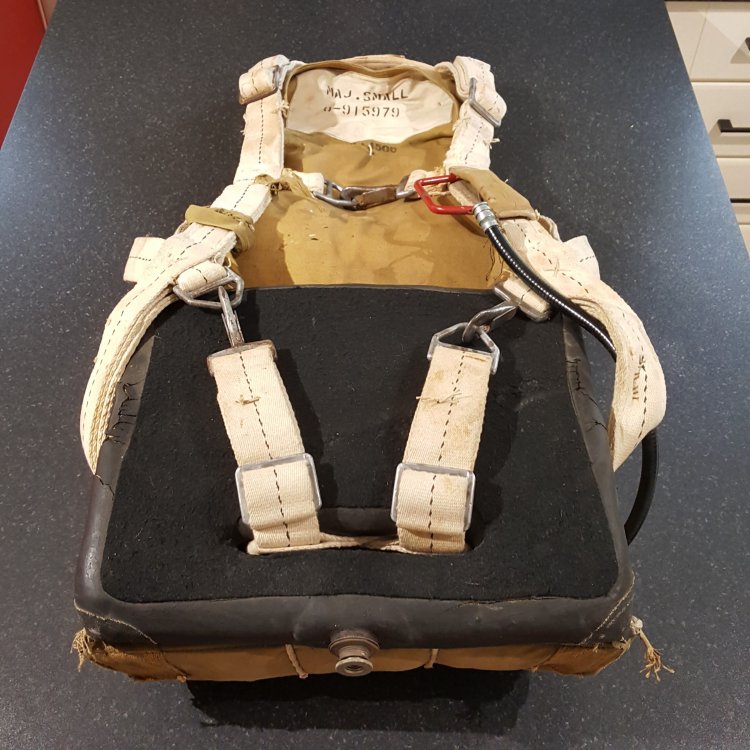
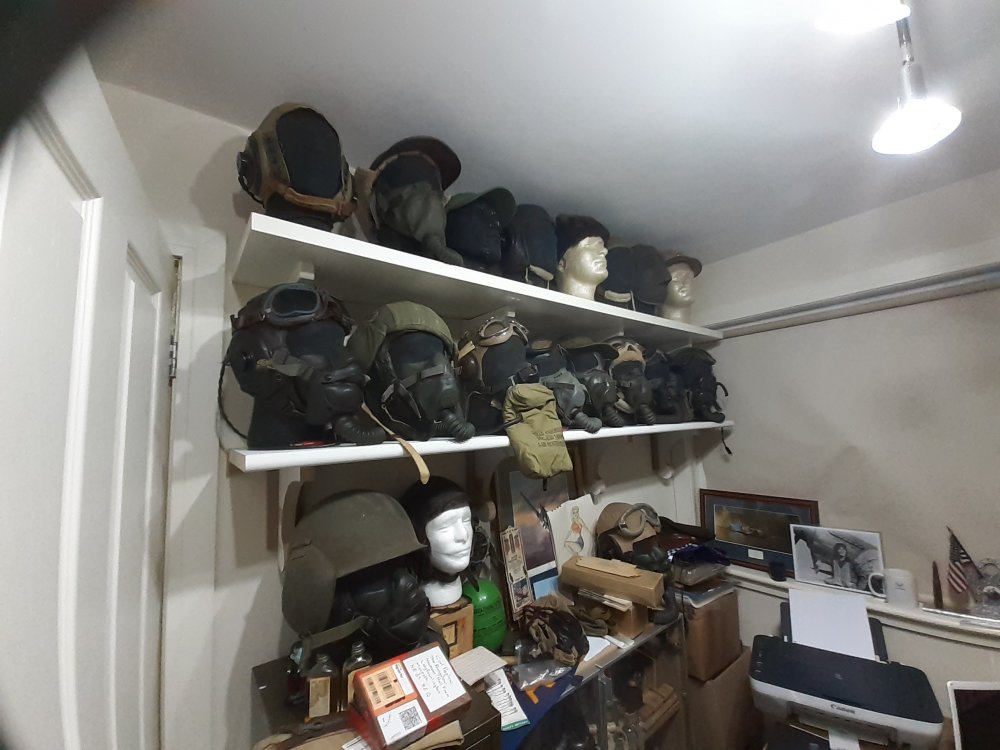
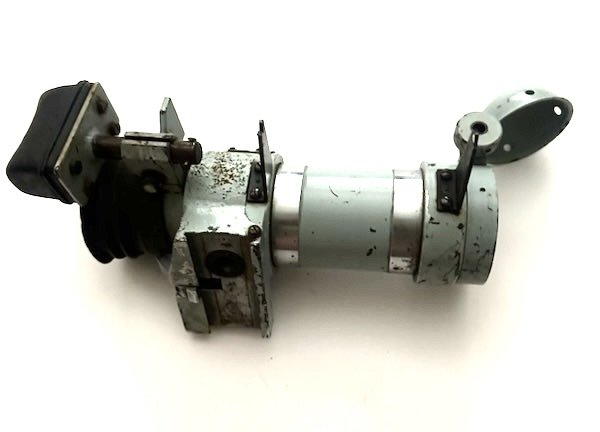
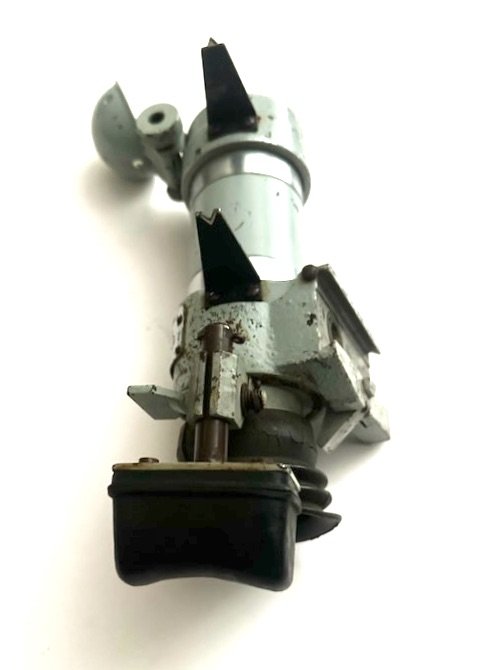
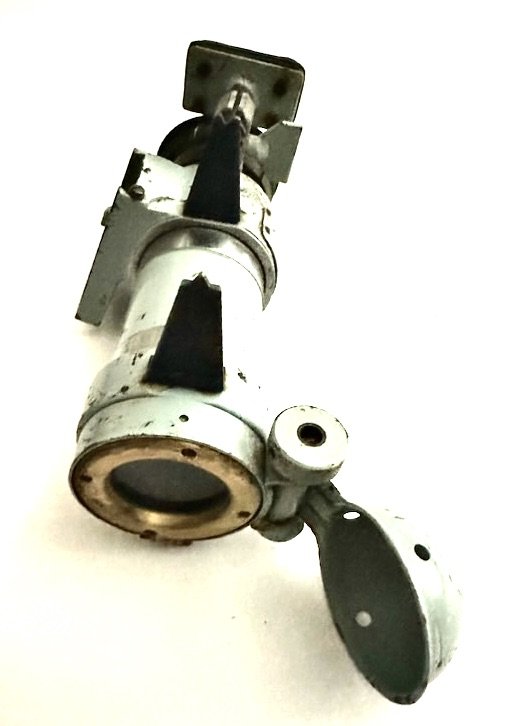
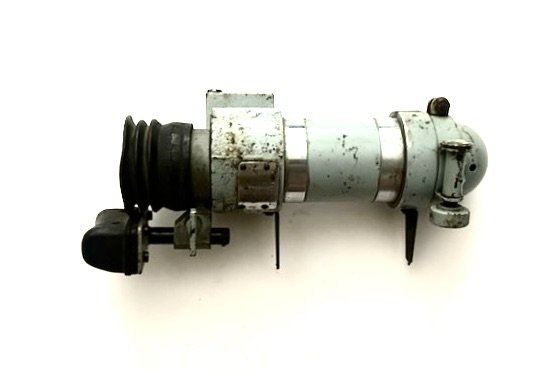
.thumb.jpg.893384dbd7d5e611fdc98a8071f965da.jpg)
.thumb.jpg.51afdcf738320bce054f37df46a34d07.jpg)
.thumb.jpg.0962bd7fe5c828be9e0fab135d63ff86.jpg)
.thumb.jpg.3fe694b619f8d5fb43d199bd7d796a44.jpg)
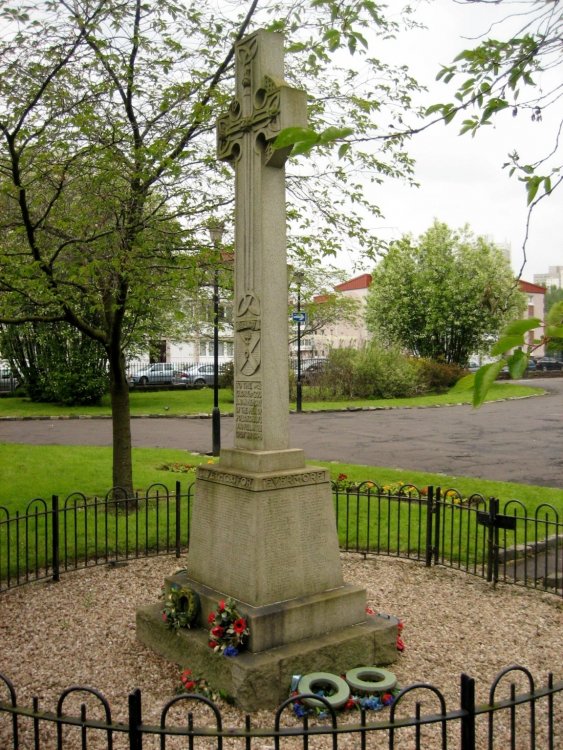
.thumb.jpg.1cc6d51fc9c8b0ff458f4391cc0b72b8.jpg)
